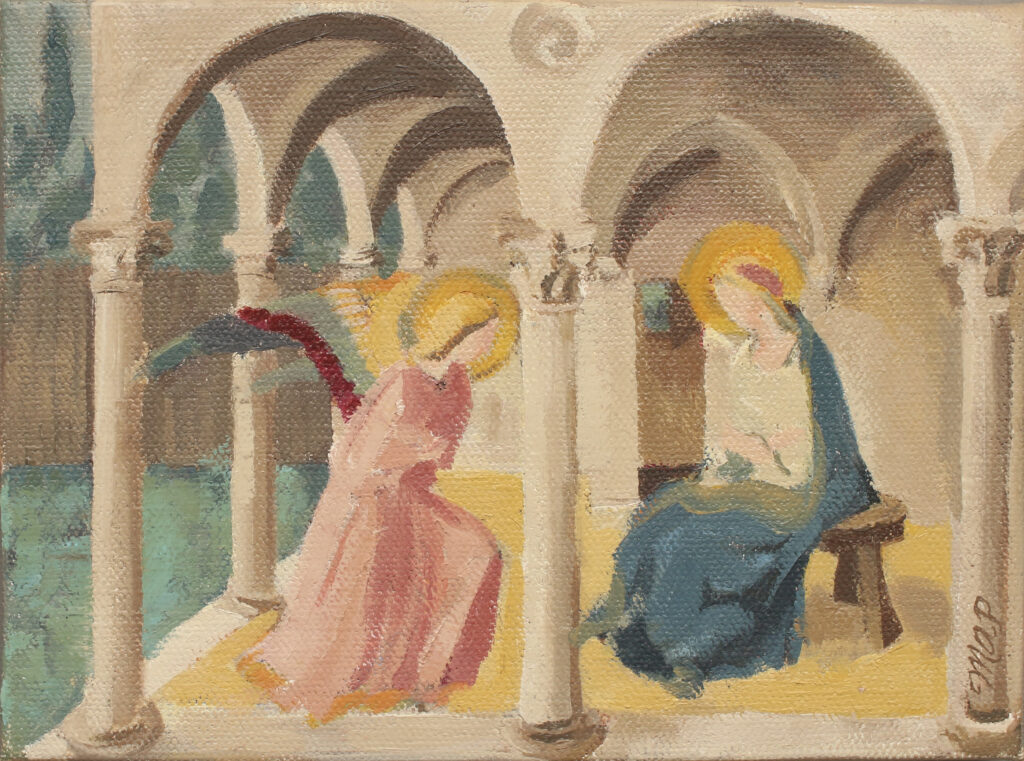
Making “transcriptions” of some of the classic Annunciation paintings is a studio practice which is also a meditation. This part of my studio practice originated from my time participating in a New York Studio School Drawing Marathon.

Making “transcriptions” of some of the classic Annunciation paintings is a studio practice which is also a meditation. This part of my studio practice originated from my time participating in a New York Studio School Drawing Marathon.
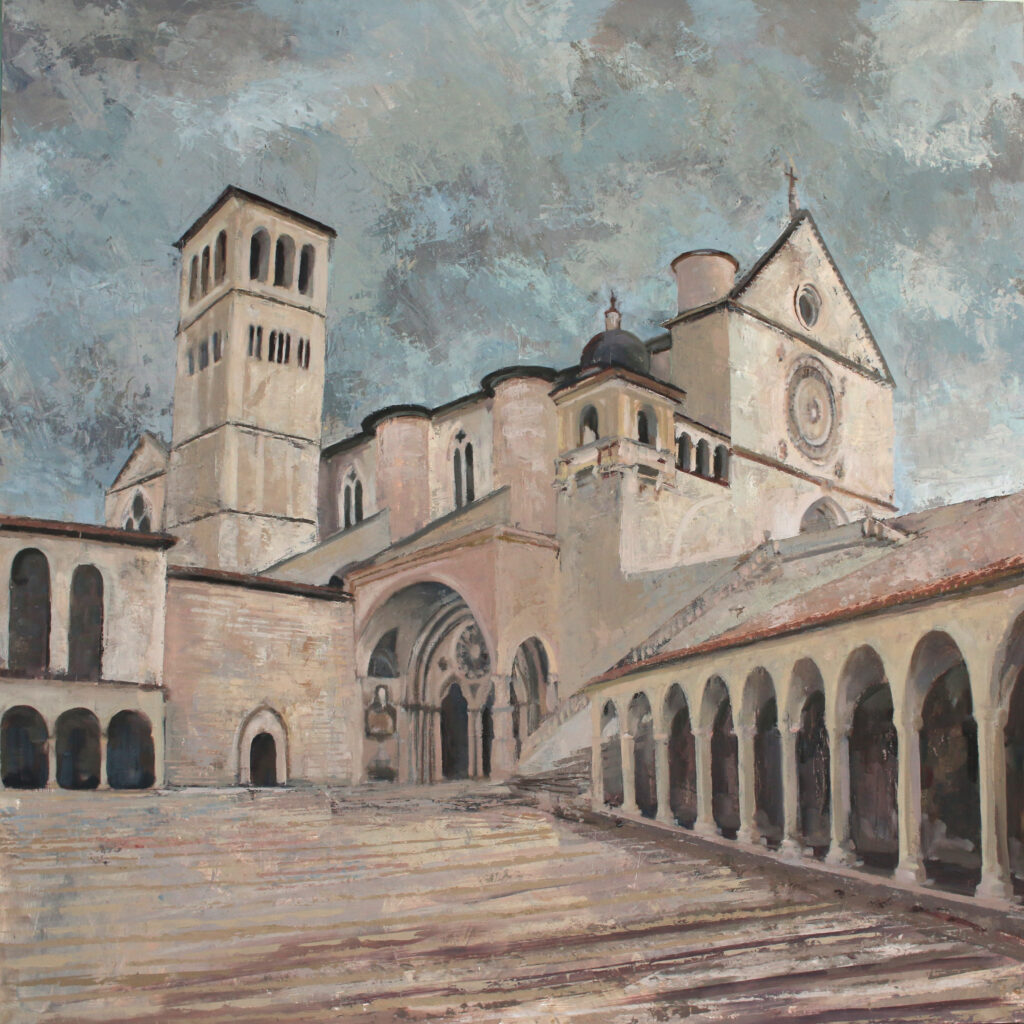
Pope Francis and Saint Francis This reflection was first published as the May newsletter for the Network of Christians in Visual Arts Over Easter, I was blessed to spend two…
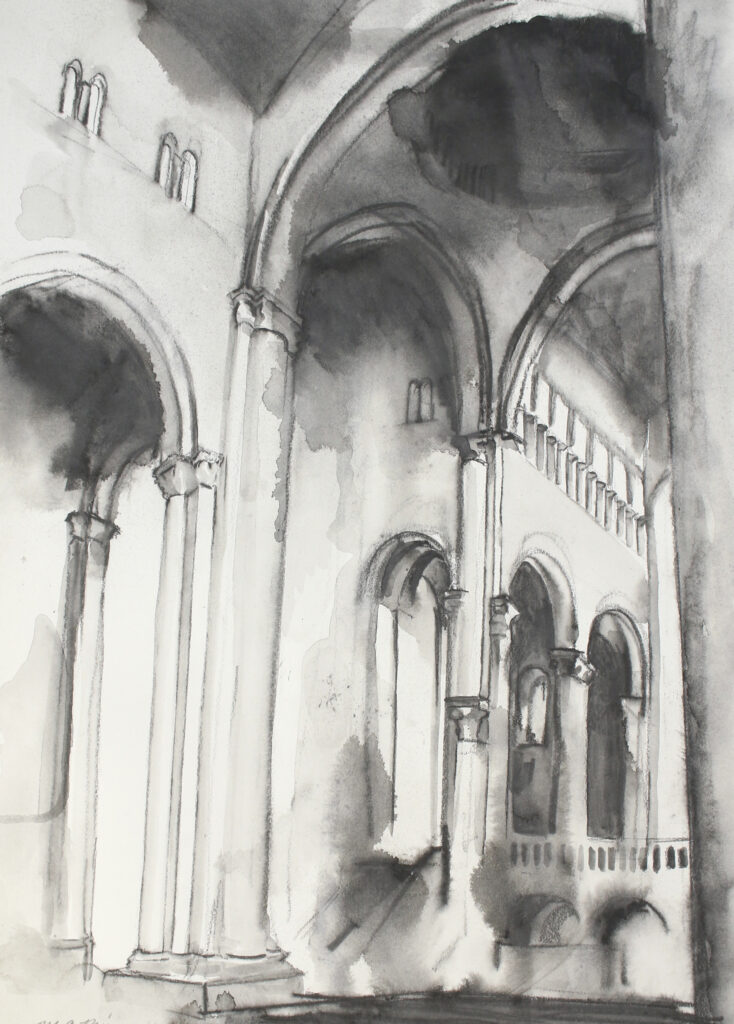
I looked for inspiration in the solidity and the weight of Romanesque architecture, the feeling of permanence rather than flight. Romanesque (“In the Roman manner”) architecture developed around the turn of the first millennium. This was the time of a church building boom in Western Europe.
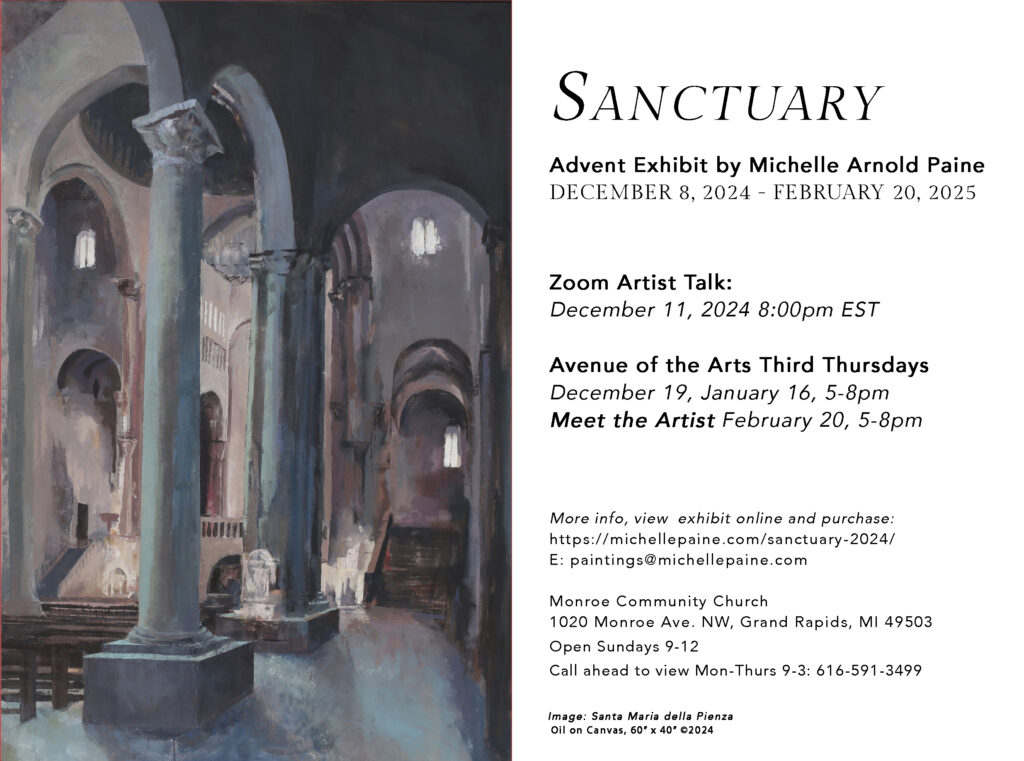
“Sanctuary” is the title of my newest Advent art exhibit. The work will be on display at Monroe Community Church, Grand Rapids, MI from December 8, 2024 – February 20, 2025. These paintings explore the idea of “sanctuary” as God’s physical dwelling place in Mary, Mother of Jesus and in the church.
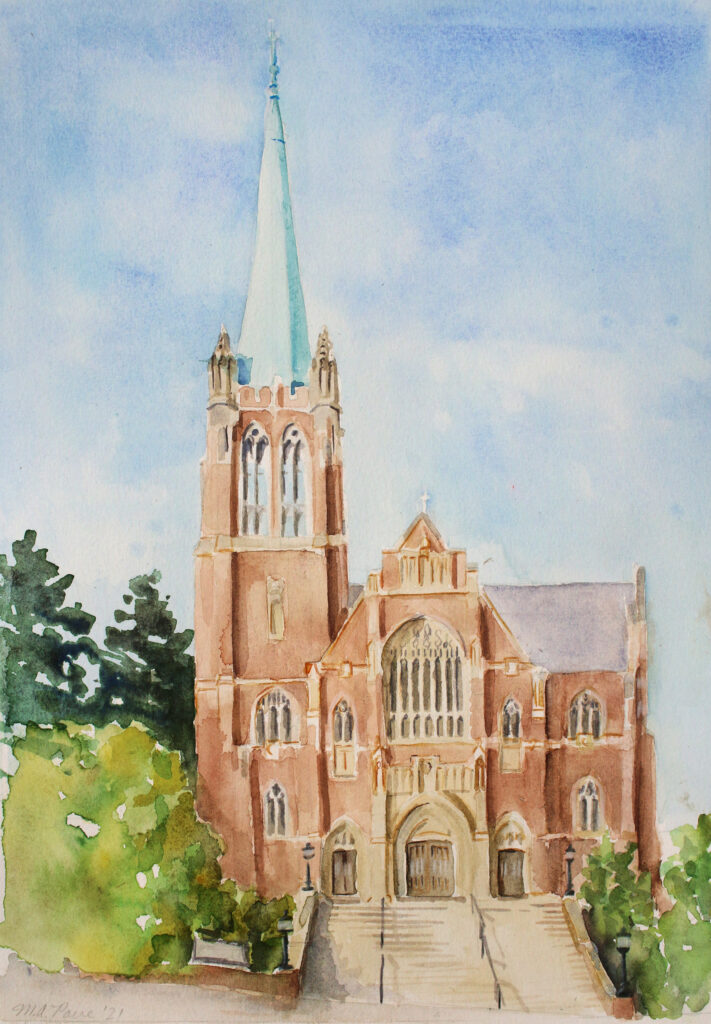
This custom wedding painting celebrates the joining of two lives in a beautiful Seattle church. The bride and groom wanted to celebrate their paper wedding anniversary with a custom watercolor of their wedding church.
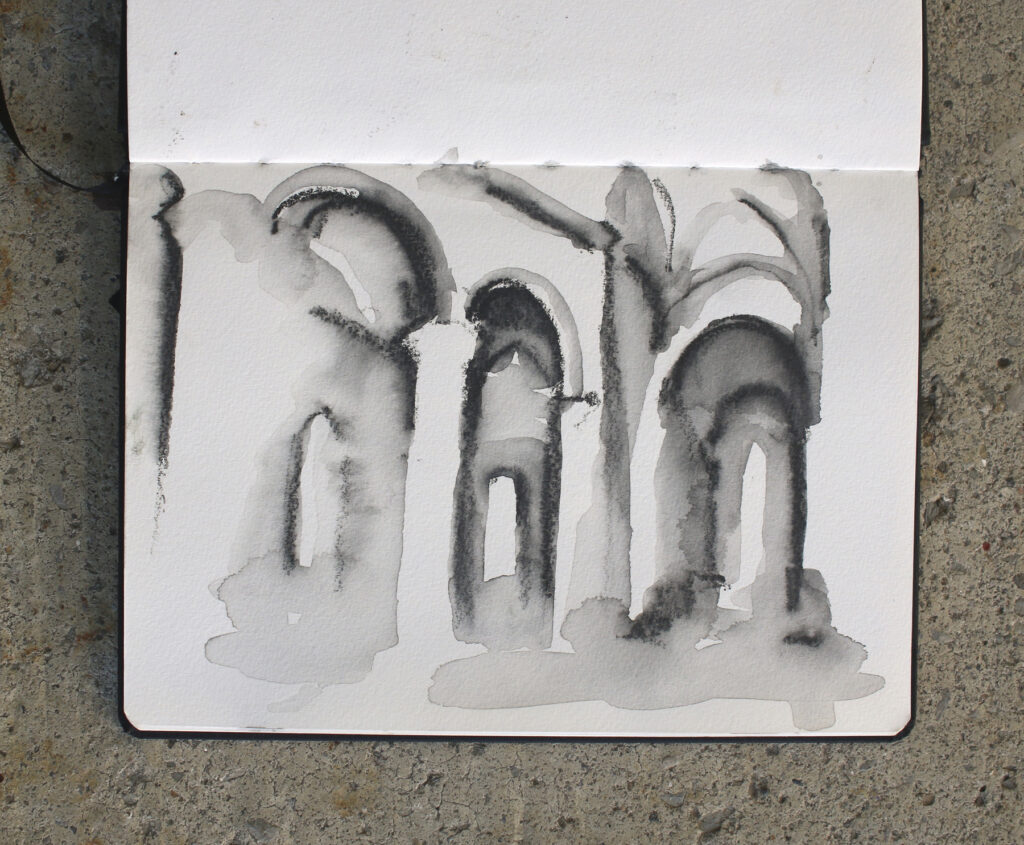
It is years now that I return to this subject matter of Italian architecture and it seems natural to share the origins of my inspiration. I was reminded of it all on my most recent trip to Italy to study Romanesque churches for the Passages exhibition. I’ve illustrated this post with sketches from fall 2023, though I’m writing about my first encounters with sacred spaces in Italy, 25 years previous.
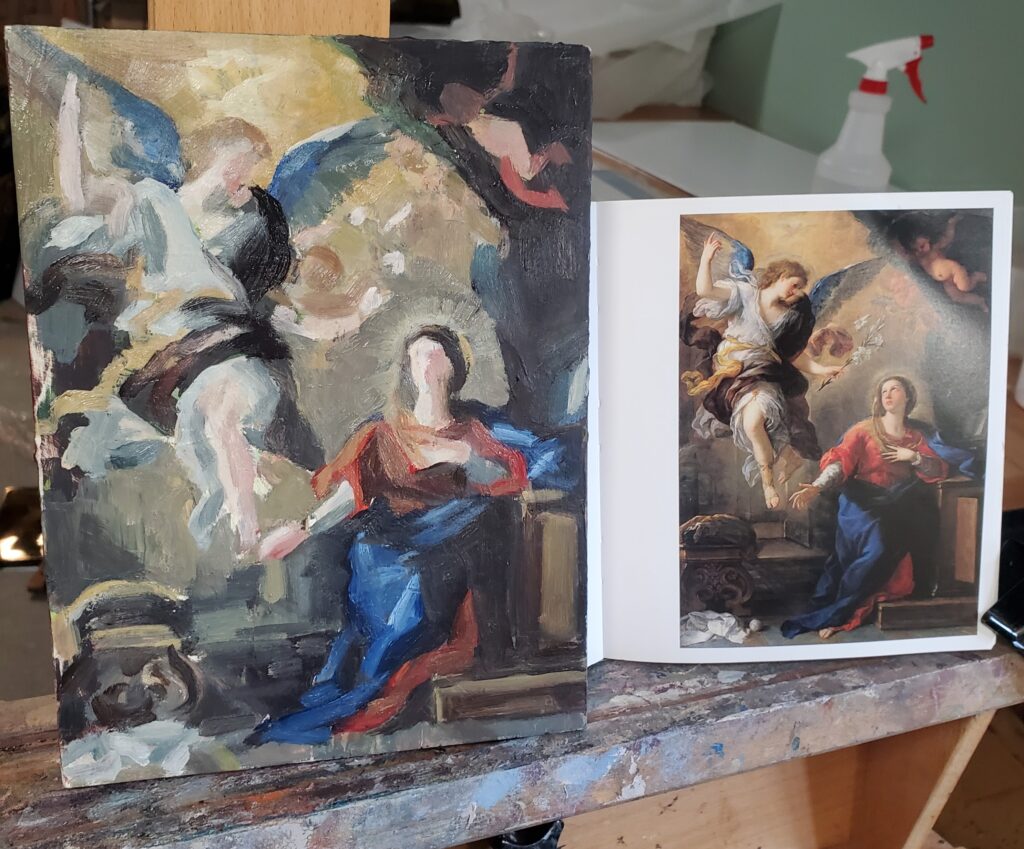
This summer I have been participating in a series of conversations about Art and Synodality. Sponsored by the Catholic Artist Connection, the conversations are in conjunction with the Catholic Church’s three year conversation on listening and walking together in its Synod on Synodality.
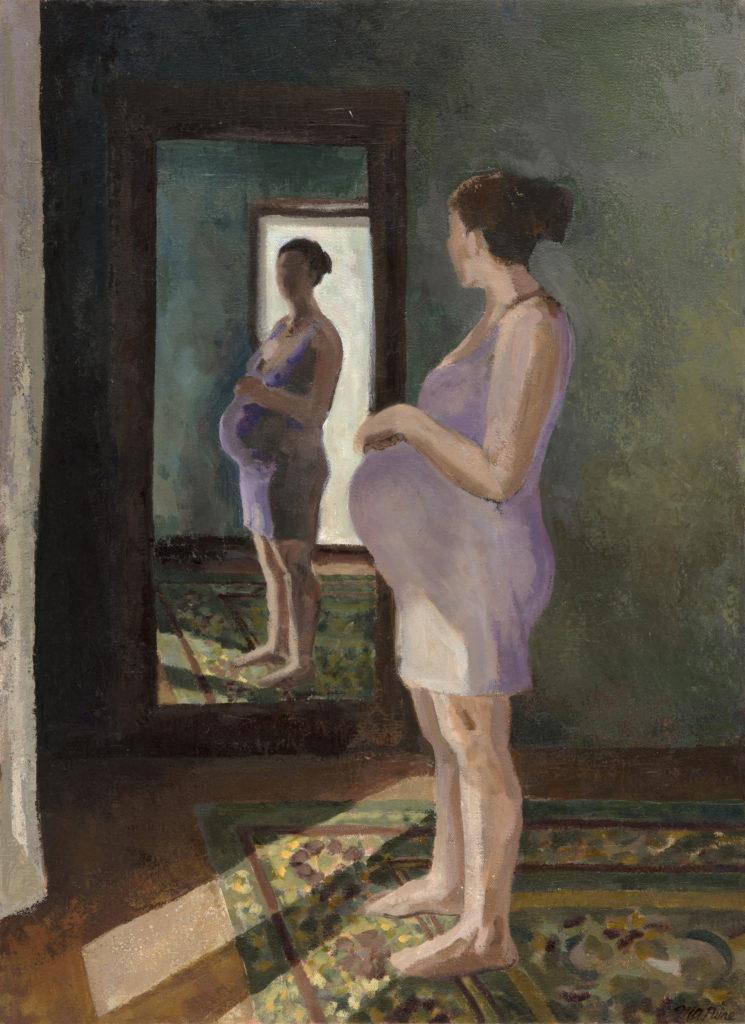
In Genesis 1:27 the author tells us that God creates man and woman “in the image of God.” The woman’s reflection in the mirror is a metaphor for woman created in the image of God. She and the child within her reflect the glory of God just as a mirror reflects light.
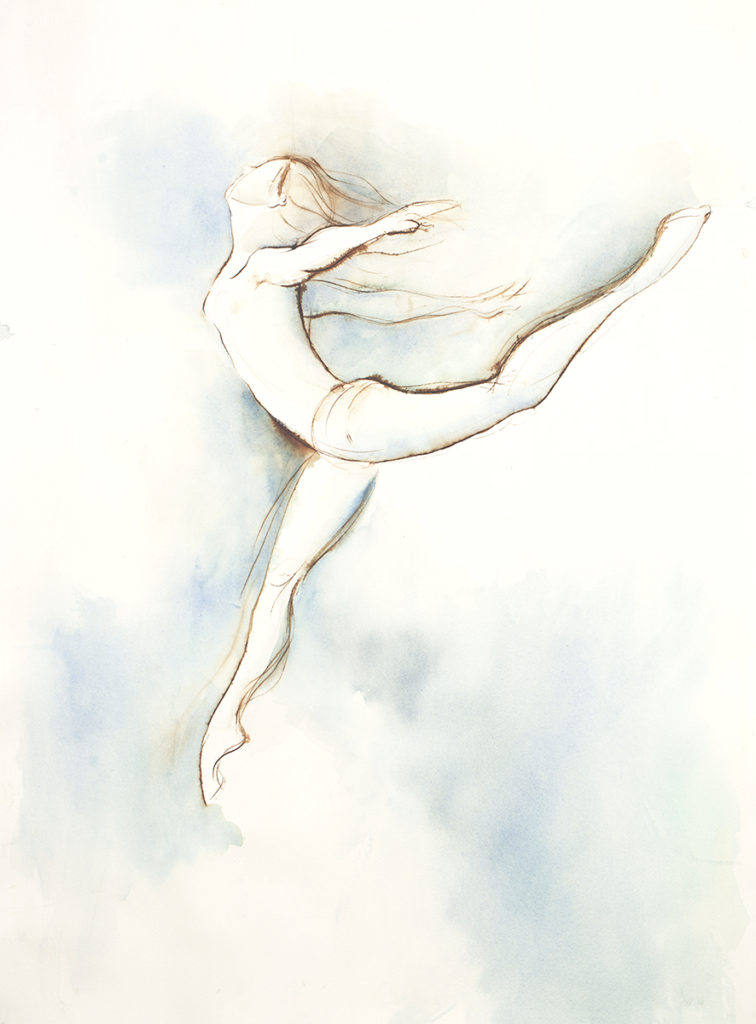
To me, Mary dances the Magnificat. The Magnificat is Mary’s song of Thanksgiving after the angel Gabriel comes to tell her she will become the mother of the Messiah (the Annunciation). When I read Mary’s Magnificat song in Luke 1:46-55, the language is so exuberant that I can’t imagine her standing still.
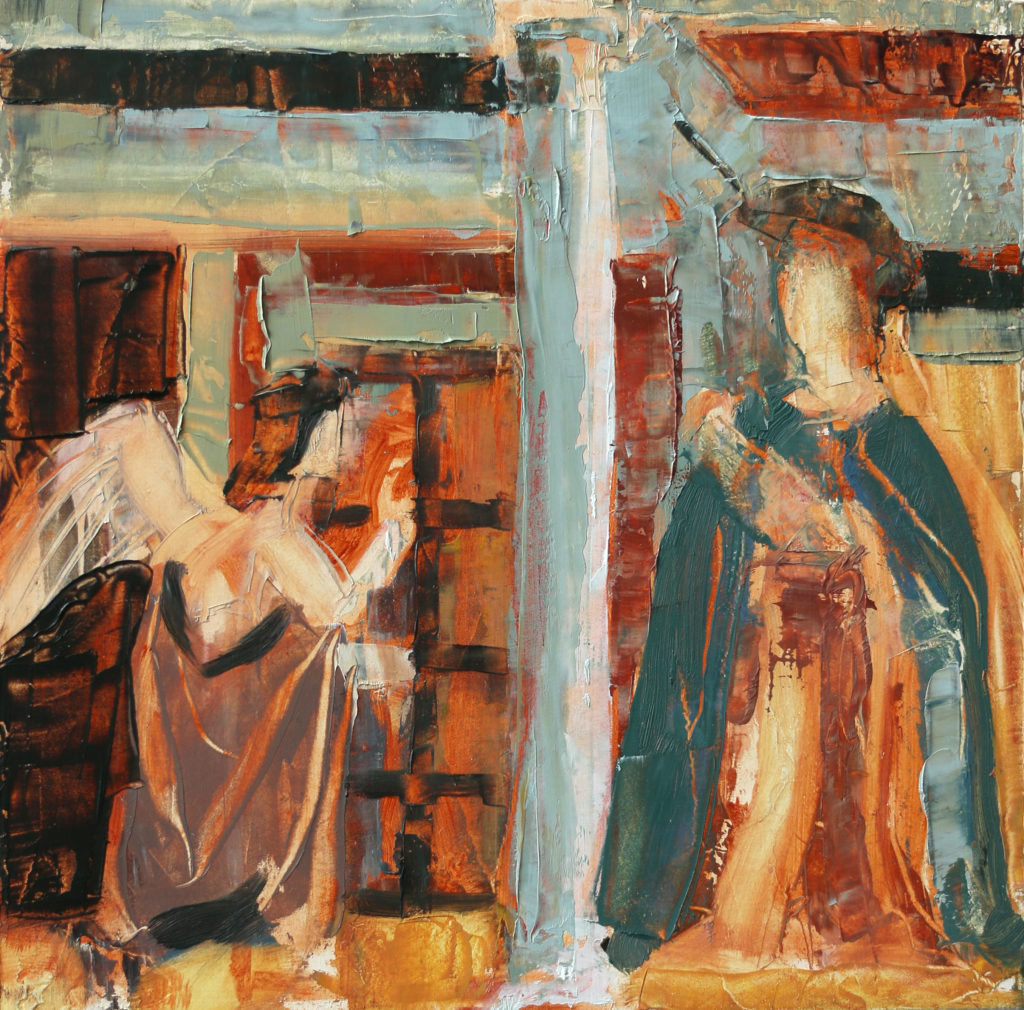
The Annunciation has been one of my favorite images for many years. My paintings seek to create modern interpretations of Mary. In preparation for this endeavor I took on a studio exercise creating small studies of famous Annunciation images. These Annunciation master studies are a study of art history as well as a meditation.
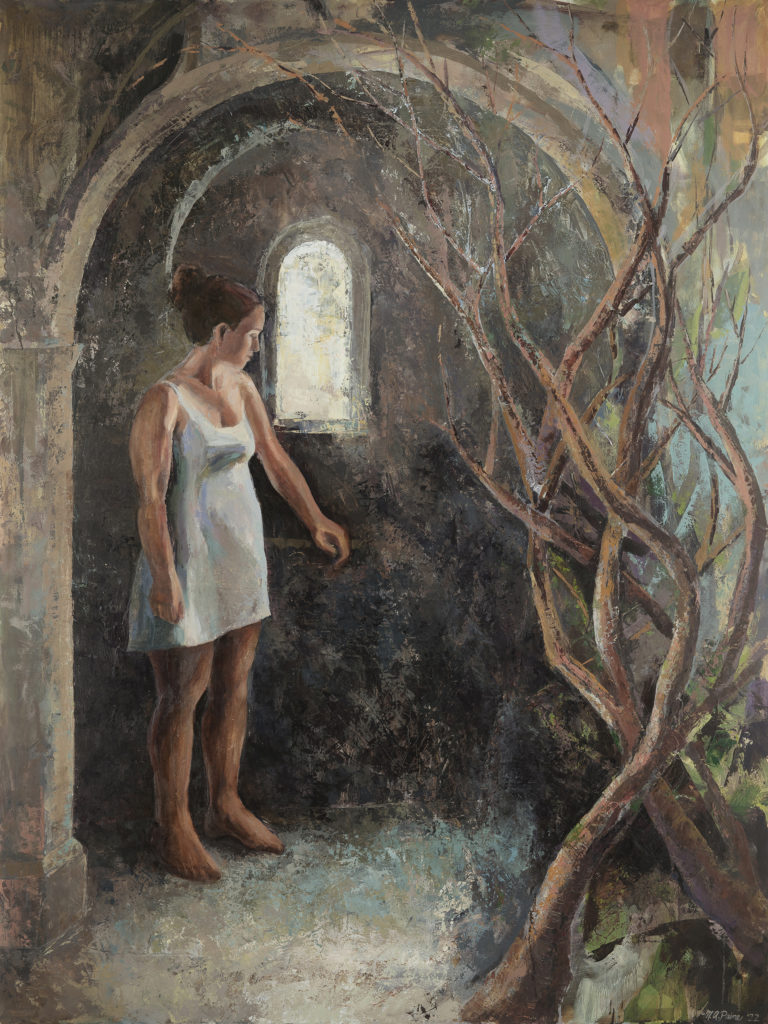
My new painting “Closed Door to Paradise” explores the relationship between Eve and Mary. The painting shows the door to heaven, to Paradise, closed after Adam and Eve took of the forbidden fruit of the tree of the Knowledge of Good and Evil. Eve’s doubt led to the closing of the door to Paradise. God forced them to flee the garden afterwards. They left the Garden of Eden and the harmony of life there and humankind has suffered from sin ever since.
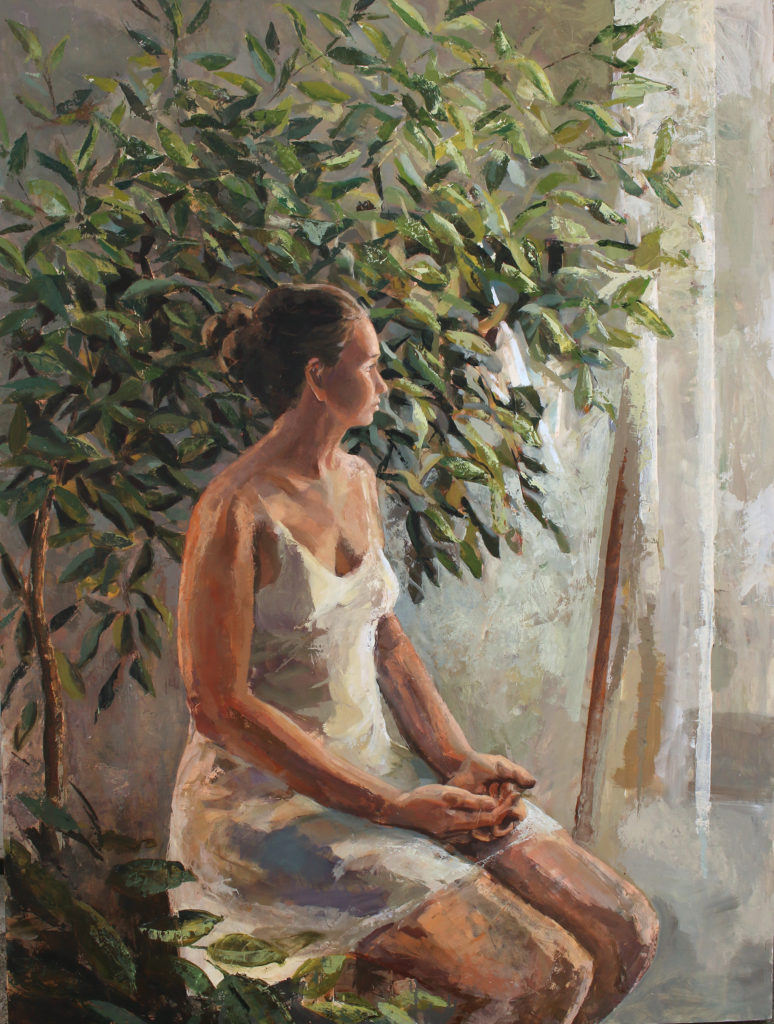
The narrative thread of a tree continues throughout the entire Bible. The tree grow in Genesis, but by the time we get to Isaiah it has been cut down and only a stump remains. However, there is still hope that from the roots a shoot, a small branch will grow again and bear fruit. The image references the words of the prophet Ezekiel, “I the Lord … have dried up the green tree, and have made the dry tree to flourish” (17:24)… And then, towards the end of the Gospel narratives, we come to the tree of the cross.

“Mary the Dawn” represents the the Annunciation, the moment of the Incarnation when Mary welcomed Christ into our world. The title references the first line of a medieval hymn “Mary the Dawn, Christ the perfect day”. The “dawn” spoken of in the poem signals that Mary was sign pointing the way to Christ.
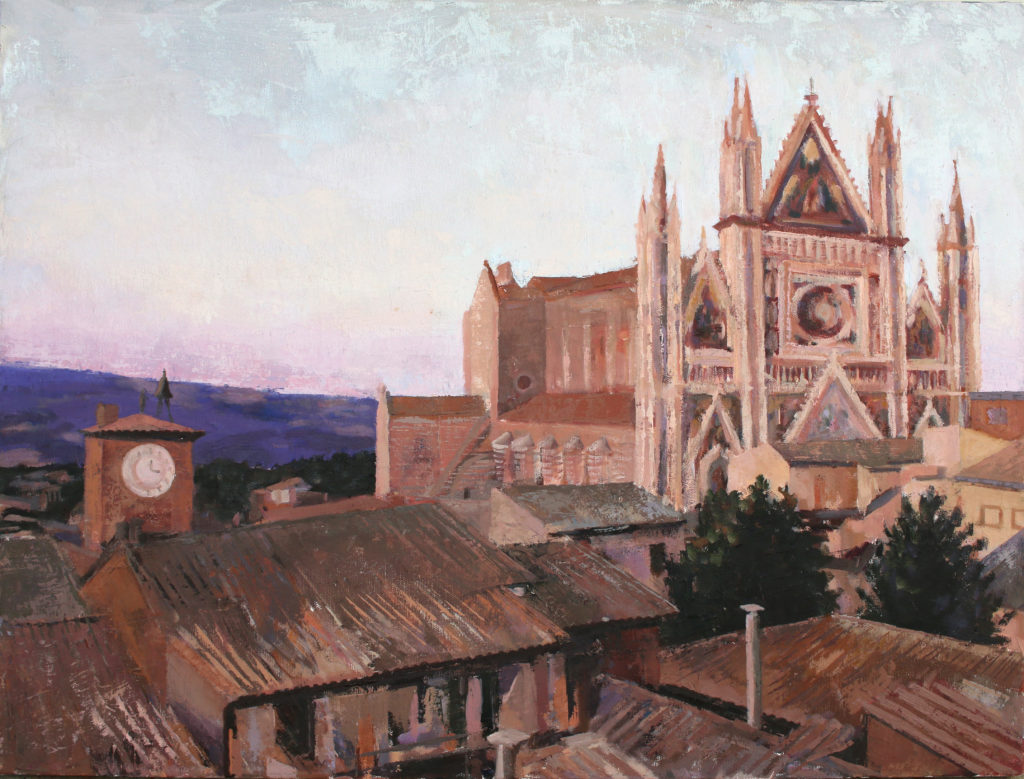
In my early 20s I spent eight semesters in Italy spread out over six years. During that period I embarked on a spiritual journey from an academic encounter with Catholic art to being received into the Catholic Church and receiving Confirmation and First Communion in the Cathedral of Orvieto. On this Feast of Corpus Domini, 2022, I share this short essay from while I was preparing for Confirmation in 2001 and a more recent video in which I share the importance of the Eucharist in my journey to the Catholic Church.
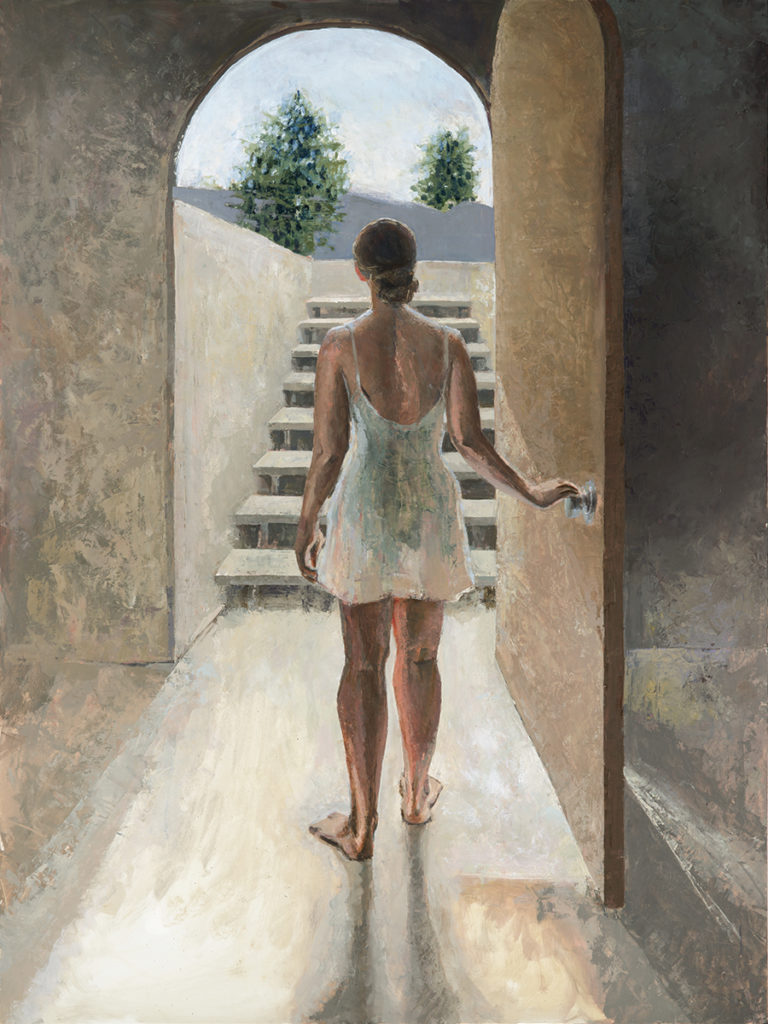
Ascent/Descent is a contemporary interpretation of the Virgin Mary as Jacob’s Ladder. This reading of Genesis 28 views Jacob’s vision of the stairway ascending to heaven as a pre-figuration of the Virgin Birth. Mary was the fulfillment of the LORD’s promise in this passage “I am with you and will watch over you wherever you go, and I will bring you back to this land. I will not leave you until I have done what I have promised you.” Through Jesus’ salvation (brought forth by Mary) we are able to ascend to heaven, and through Mary, Jesus descended to earth. Mary was the vehicle, the connection between heaven and earth which allowed salvation to come.
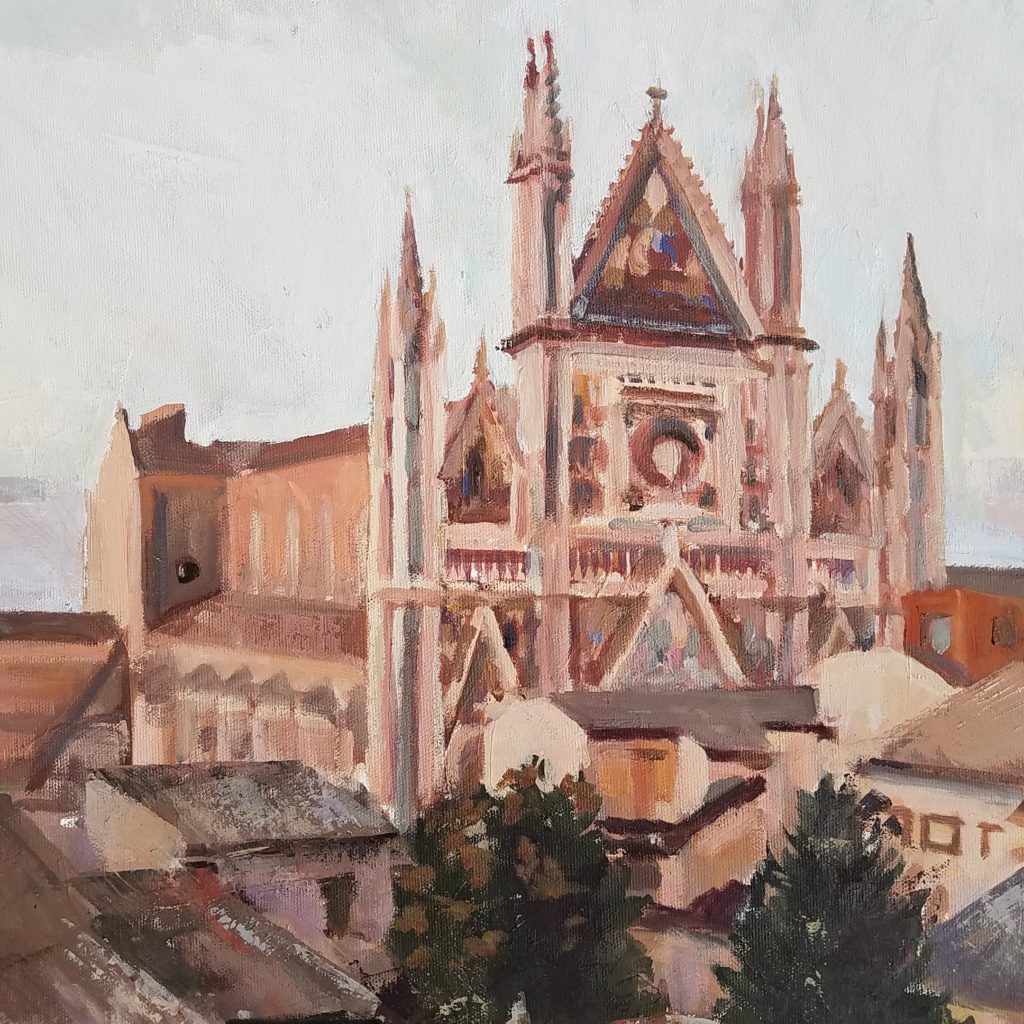
Processing the 20th anniversary of September 11th this weekend has led me to reflect that living abroad at that moment was in fact formative to my politics, my worldview, and my faith. I’m sharing my journal from the moments after September 11th in Orvieto in the hopes that it may be an encouragement to someone in the midst of divisive times.
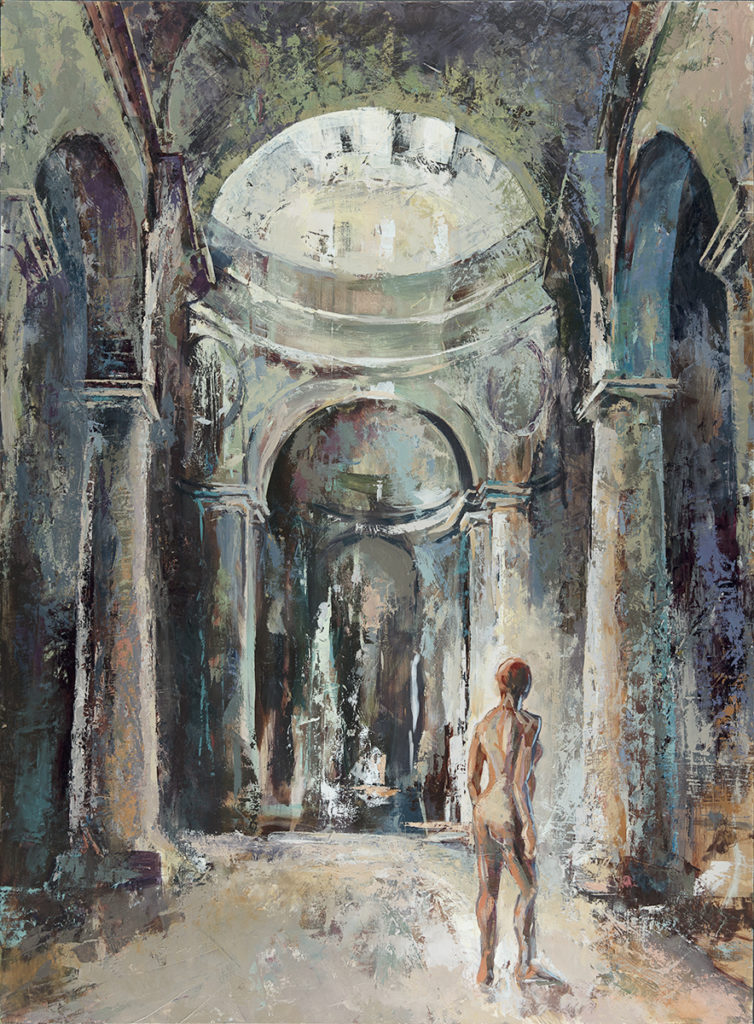
My newest Marian painting “Interrogatio: Inquiry” depicts that moment of questioning “How can this be?” when the angel announced the Christ’s coming to Mary at the Annunciation. Mary’s vulnerability before God is represented here by the nude female figure. The grand space of the architecture represents God’s overpowering presence. The architecture also becomes a metaphor for Mary herself, often referred to in medieval texts as the Temple or dwelling place of the Lord because of her role in the Incarnation.
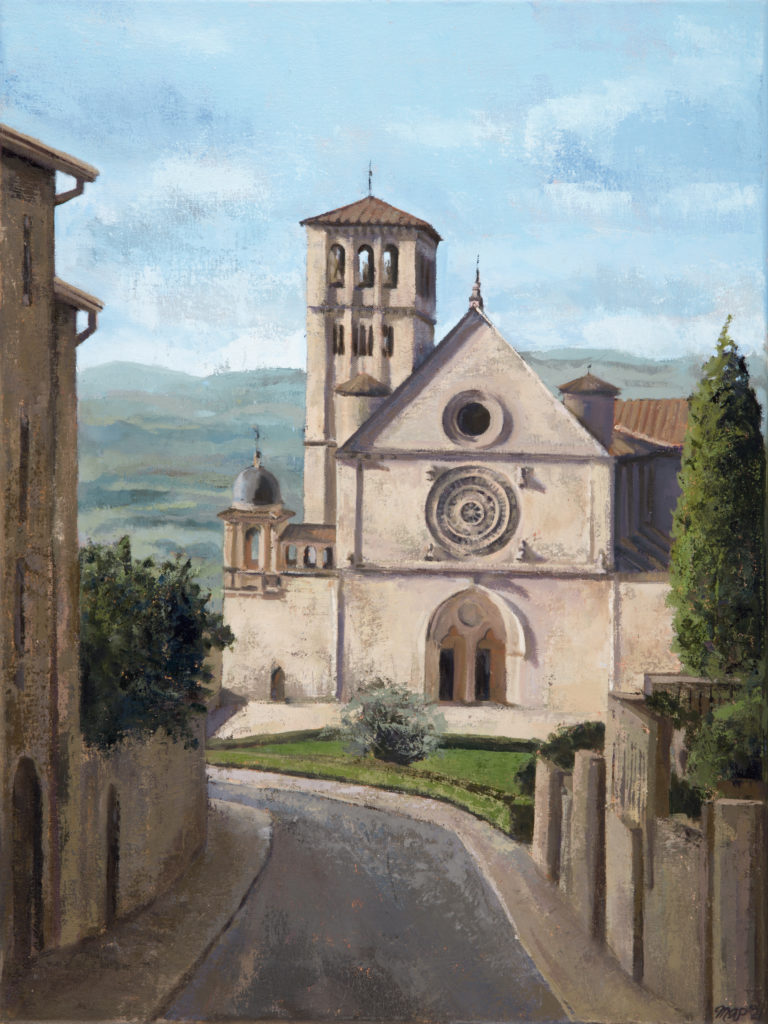
In a similar way, I returned to the shapes and images from my time in Assisi many times. I felt a sense of mystery in the images of rhythms of dark and light. Through drawing and painting I explored the arches of an alleyway multiple times. For me it was not simple documentation of medieval architecture. To me these passageways were like my pilgrimages themselves -a path to something beyond what was visible.
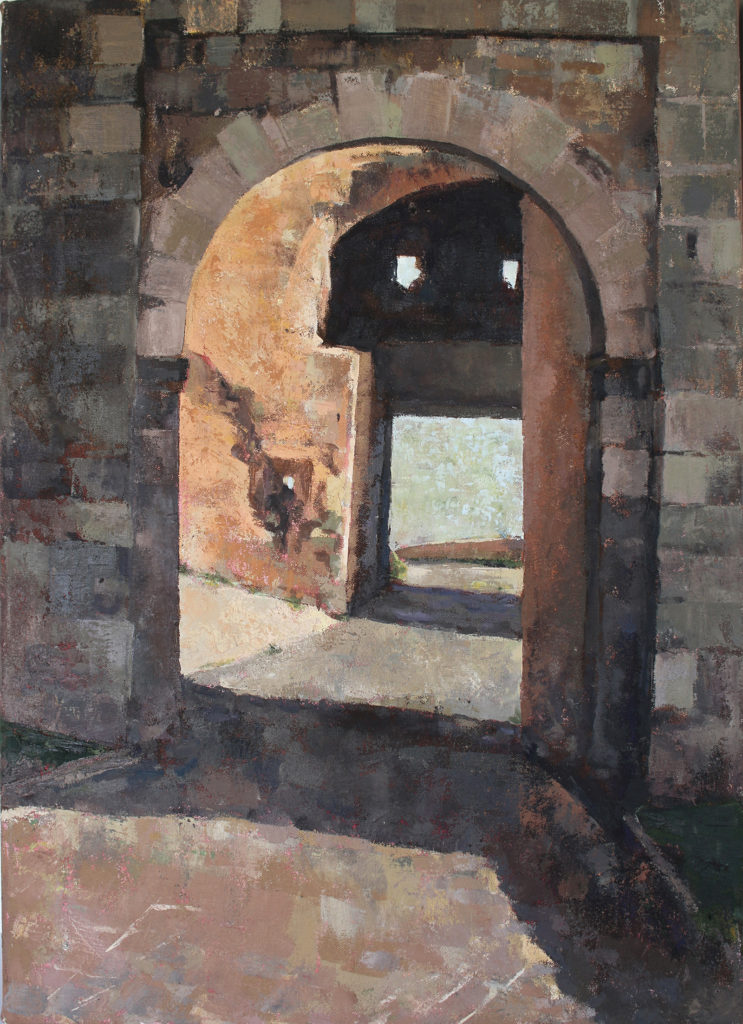
The arch in this painting is called the “Porta Postierla”, which leads out of the clifftop town of Orvieto, Italy and down towards the train station. The road criss-crosses the path of the funicular which is the way most tourists arrive in Orvieto. But when I lived there I loved to use the slower, medieval path.
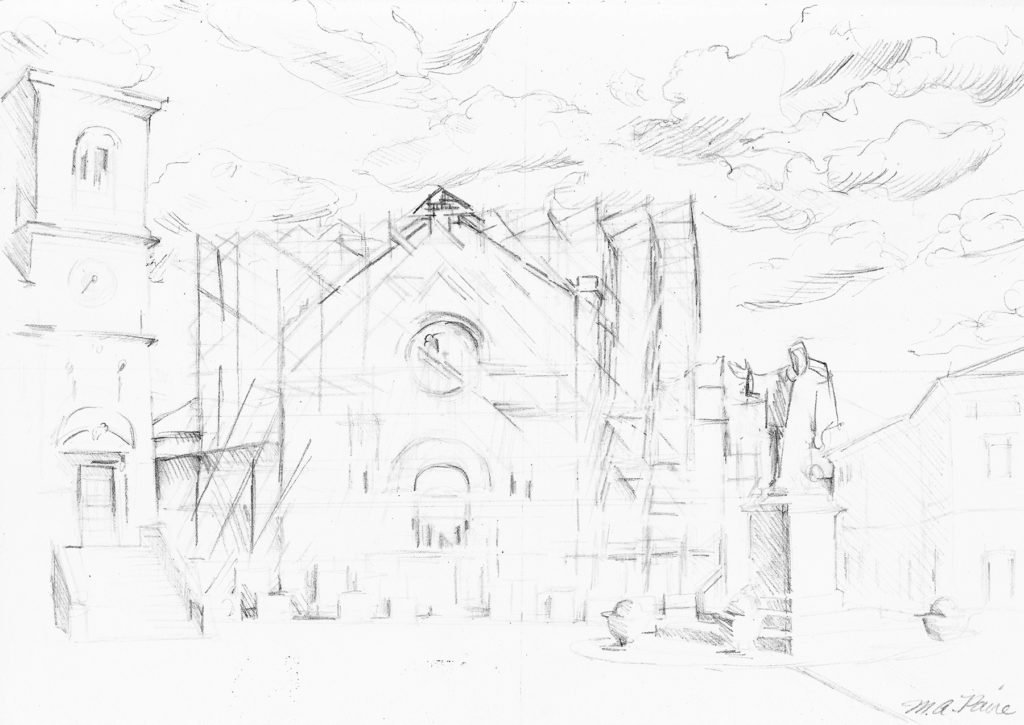
This new painting depicts the Basilica of Saint Benedict of Nursia in its current partially-ruined state, after the earthquakes, enveloped in scaffolding. Fragile. Waiting. Precarious. It has become more poignant in recent months…

I created these church interior drawings as studies for a previous series of paintings of cathedral architecture. Each intimate drawing explores the space and emotion of the beauty of sacred space. As a result, they hold new poignancy during this time of the COVID-19 pandemic. During this time many of us have been separated from our houses of worship and faith communities due to social distancing regulations.

The set of three paintings is a visual accompaniment to the poetry of Angela Alaimo O’Donnell. The publication asked me to complete three paintings to accompany O’Donnell’s poem “Christ Sightings: A Triptych”.
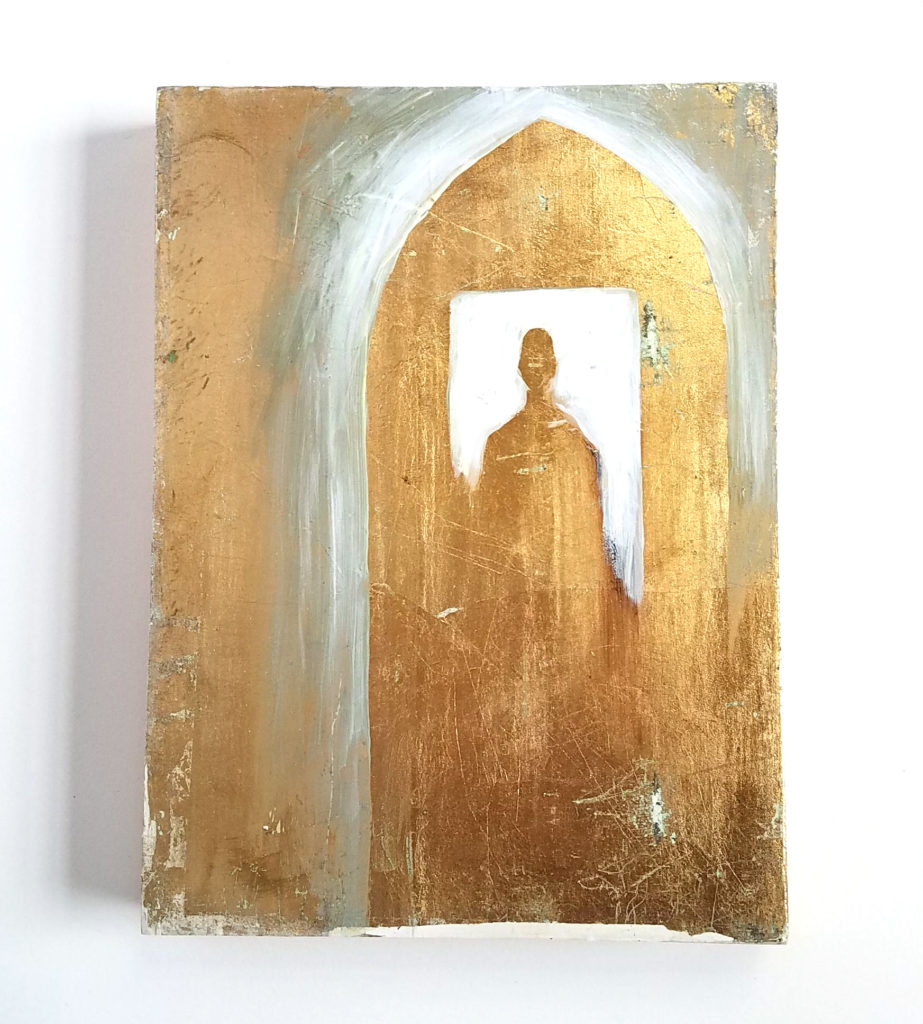
My newest series of Gold Silhouette paintings are meant to be contemporary icons, modern interpretations of traditional icons. Whether architecture or figure, even landscape, my work has always centered on a theme of convergence between heaven and earth. Similarly, these new mixed media pieces juxtapose the expressive minimalist quality of my figure drawings with the other-worldly materials of metal leaf and paint inspired by iconography.
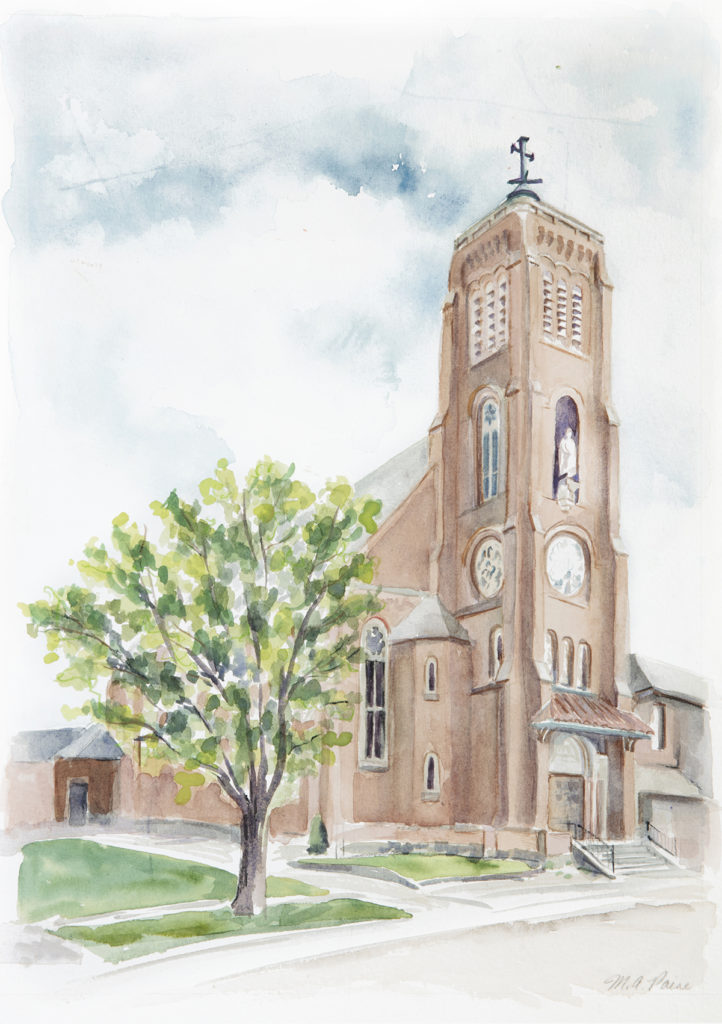
After I painted the Historic Church of Saint Rose in Perrysburg last year, a local family suggested a painting of Saint Joseph Parish across the river as a special anniversary gift. Her parents were married at St. Joseph Parish in Maumee, Ohio. Since they are still parishioners there, she thought a painting of the historic church would be a memorable gift to celebrate their years together. The architecture of churches communicates the eternal, where God comes to earth…
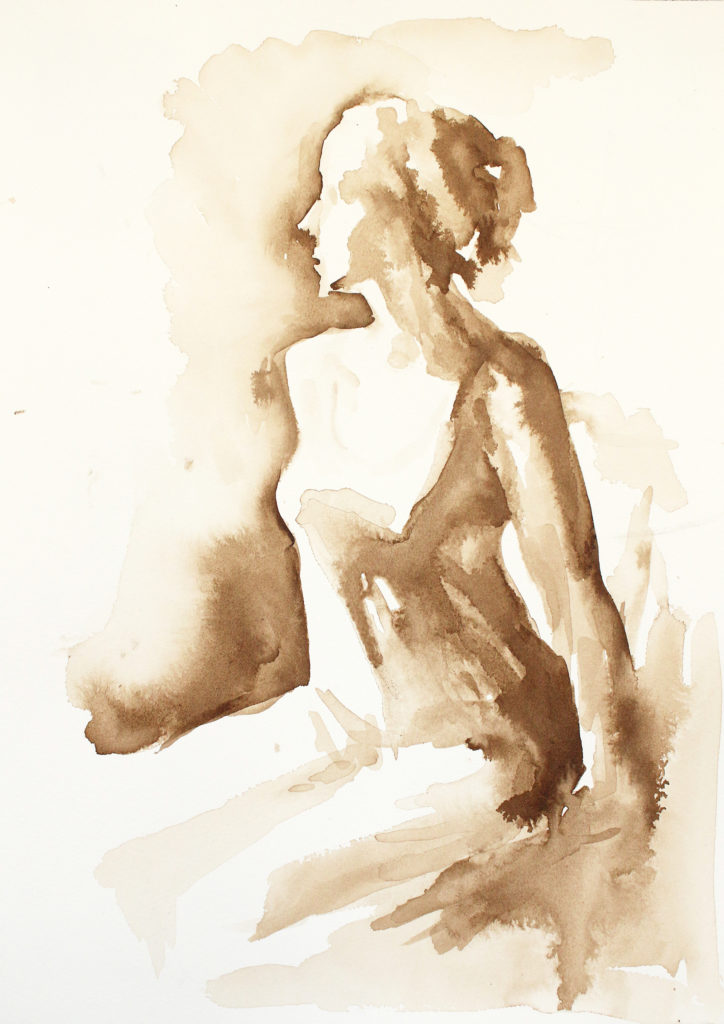
One of the miracles of creative collaboration is the momentum it creates, continuing to create new work beyond what was originally envisioned. After the model session, once my drawing was photographed and titled and shared, Olivia wrote this poem in response to the drawing.
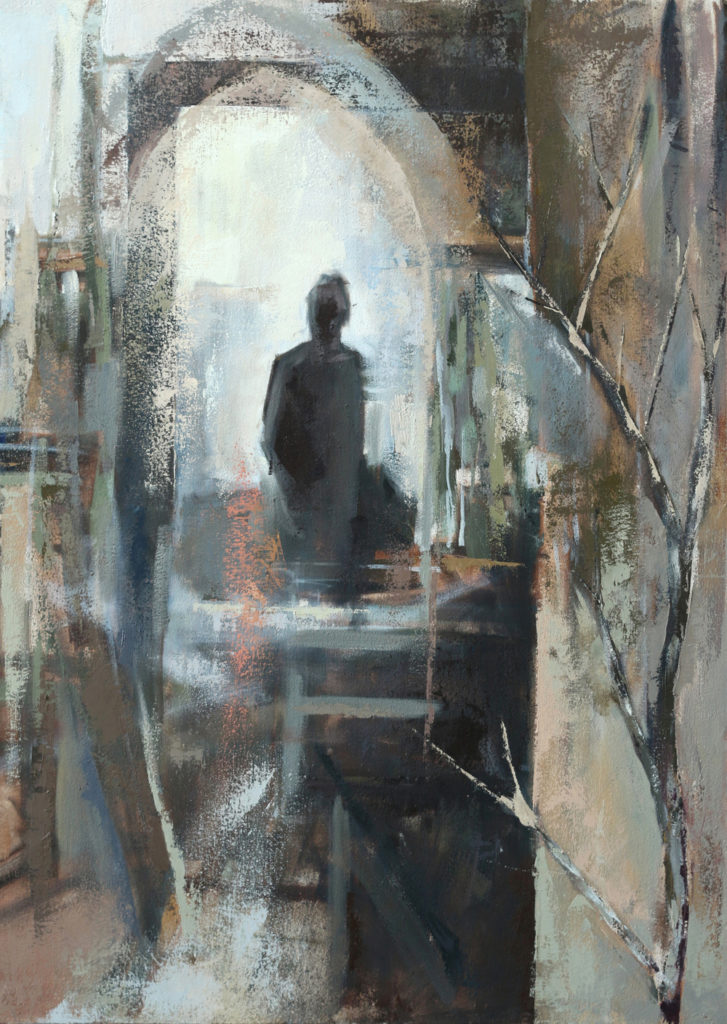
The figure in the mirror is attentive, ready, waiting, poised in the act of creating. Her world is not limited to the objects before her – the mirror, the window, the branch. Within them, through them, she sees more: she sees deeper into a physical world than would be considered possible at first glance
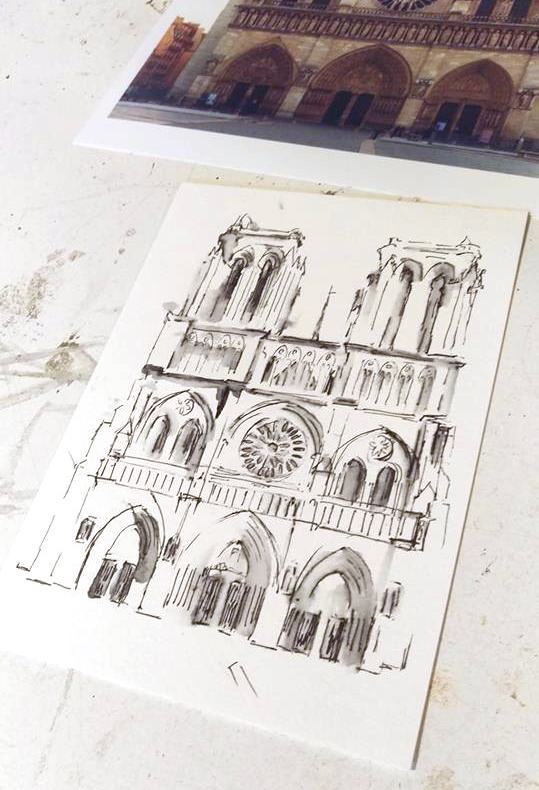
A few days before Easter 2019 we all watched in shock as fire enveloped a great monument of Christian architecture, Notre Dame Cathedral of Paris. Just a few days before I had discussed with my two homeschool co-op classes about Pope Benedict XVI’s charge to be “custodians of beauty”. In his address to artists in 2009 he tasked artists with the responsibility of being “custodians of beauty”. I strongly believe the call is to all of us.
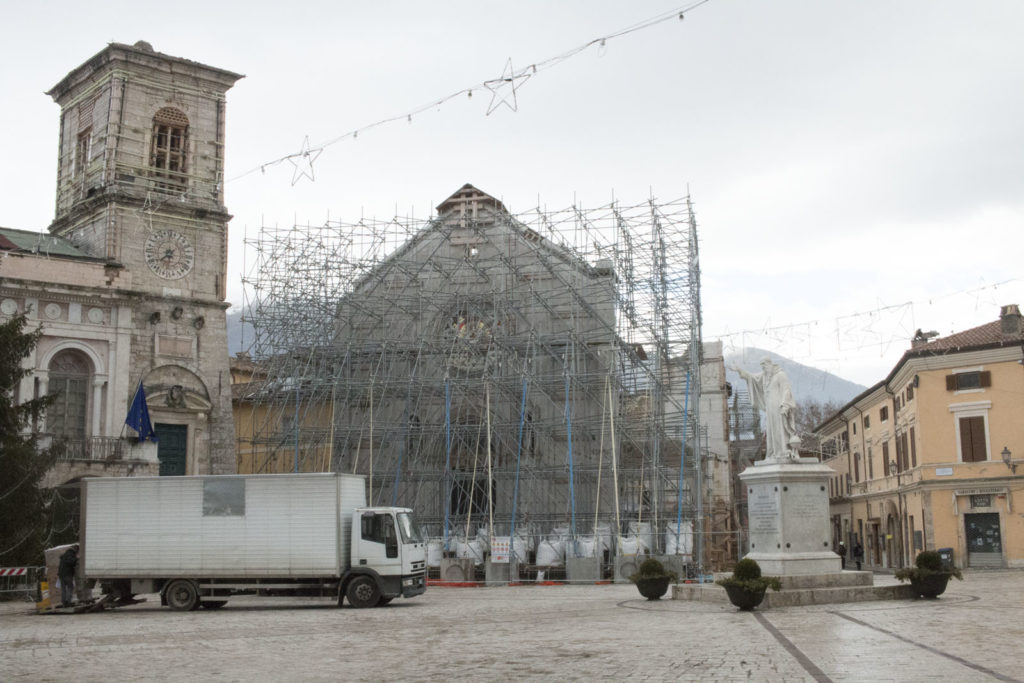
In 2016 an earthquake and aftershocks crumbled many parts of the town of Norcia, birthplace of Saint Benedict, founder of Western monasticism. The Monks of Norcia and their rebuilding become symbols of hope in the Catholic church.
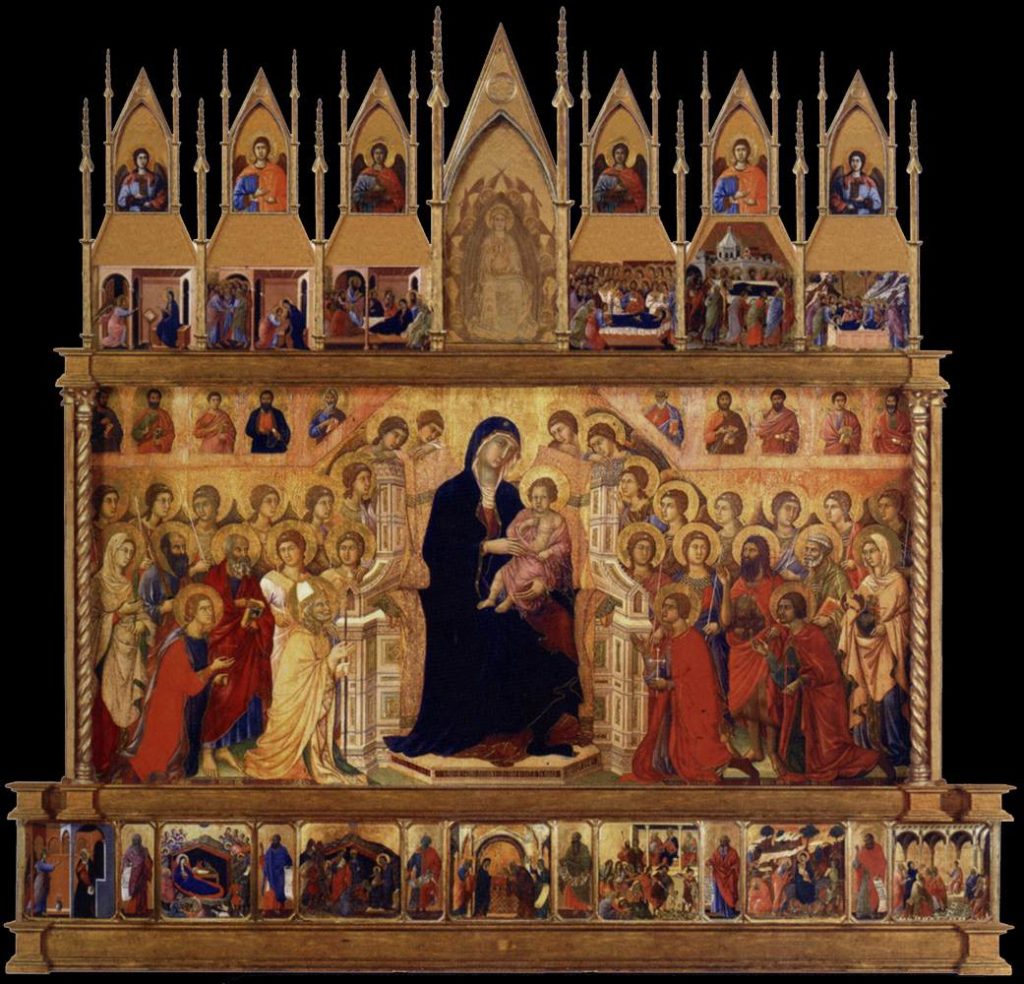
“Sacred art is true and beautiful when its form corresponds to its particular vocation: evoking and glorifying, in faith and adoration, the transcendent mystery of God.” From the Catechism of…
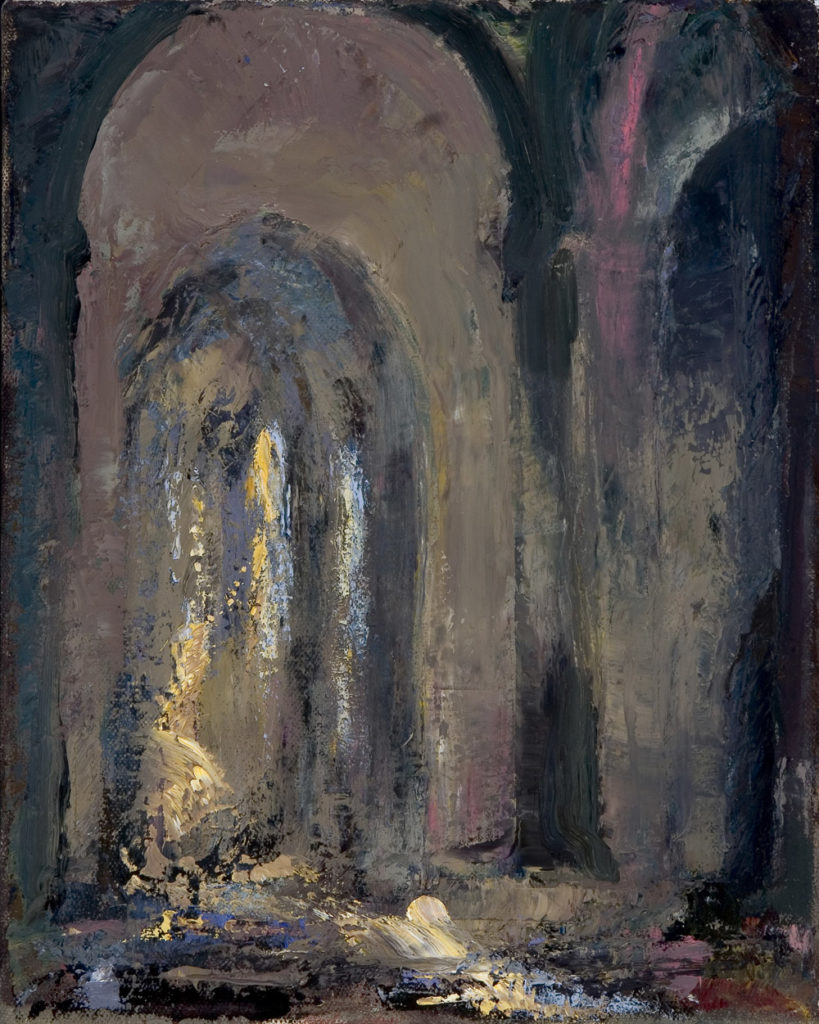
The exteriors of local churches shape the landscape of daily life-about-town, but their interiors have helped shape spiritual lives for centuries. In Europe, cavernous sacred spaces were built for throngs of religious activity, but now hold only shadows of those presences. The shapes of archways reaching towards heaven, the rhythm of dark and light passing through complex spaces inspire a sense of quiet awe and shadowy mystery.
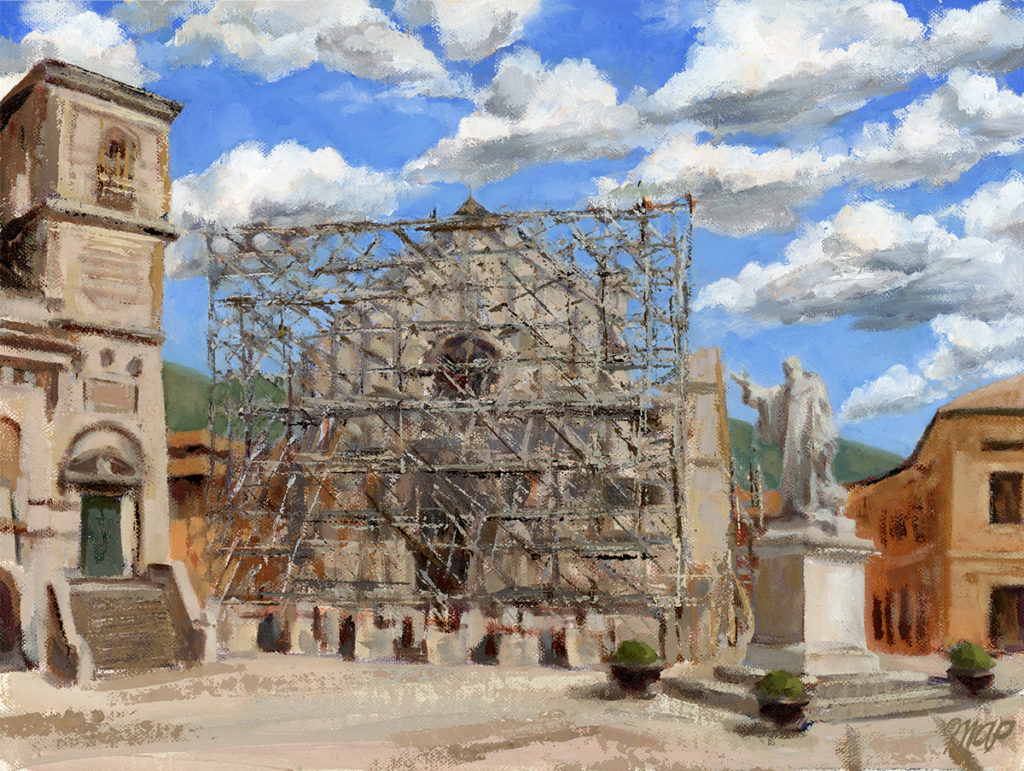
These new paintings have become my own reflection on the work of rebuilding tradition. One commemorates the Basilica as it looked before the earthquake. The second depicts it in its currently ruined state. One painting was commissioned by a Catholic, the other by a Protestant, and so together they are a witness to the influence of the great Saint Benedict on Christian life.
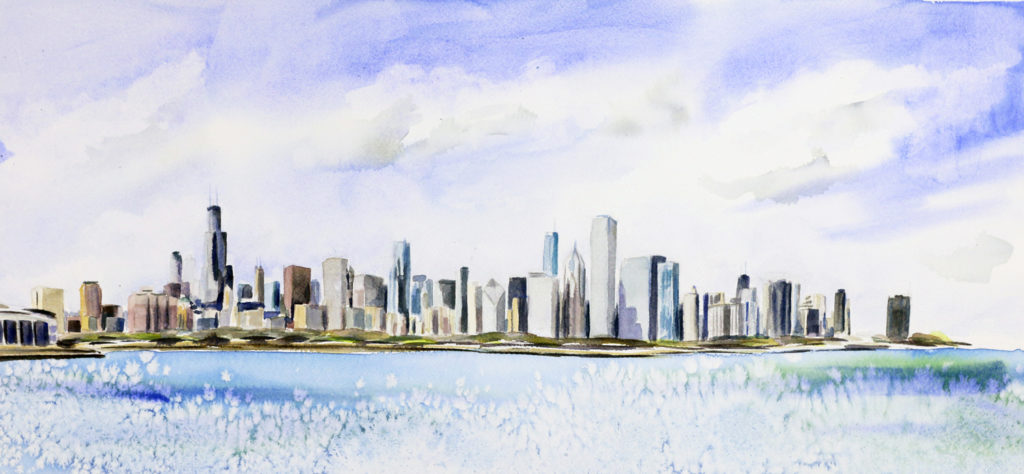
When I was a child I wanted to be an architect. I understood early on how built space shapes our human experience. I channel this love of architecture into my work…
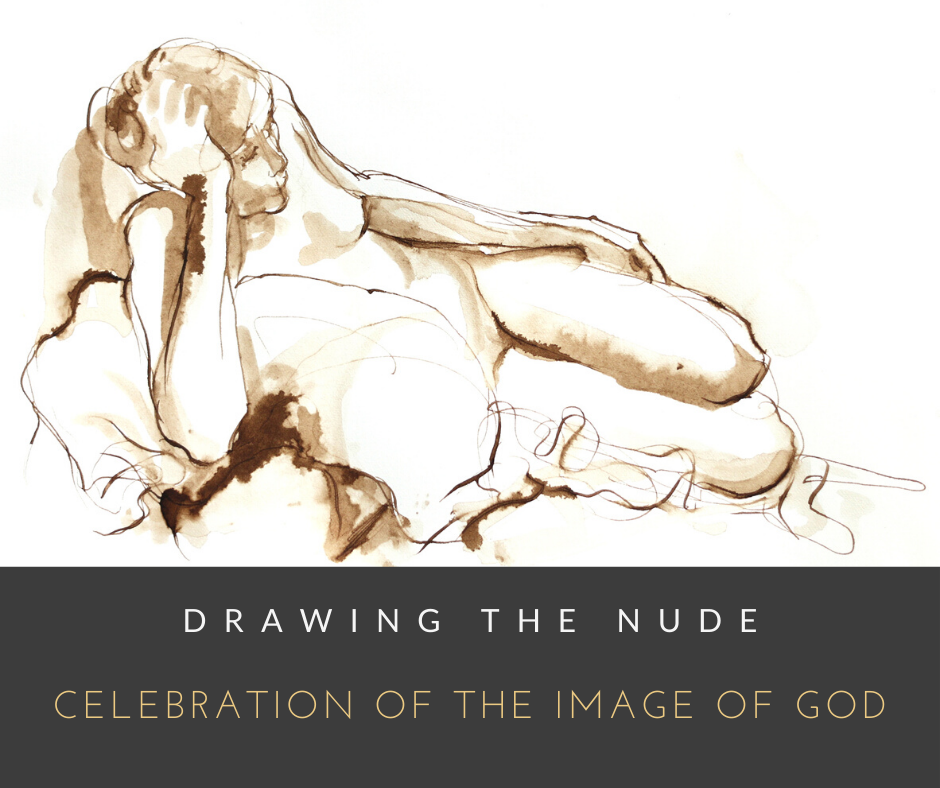
In every model, old or young, large or small, male or female, I see one God’s amazing creations. In the process of drawing I try to capture just one small portion of the magnificence, delicacy, and beauty of what He made.
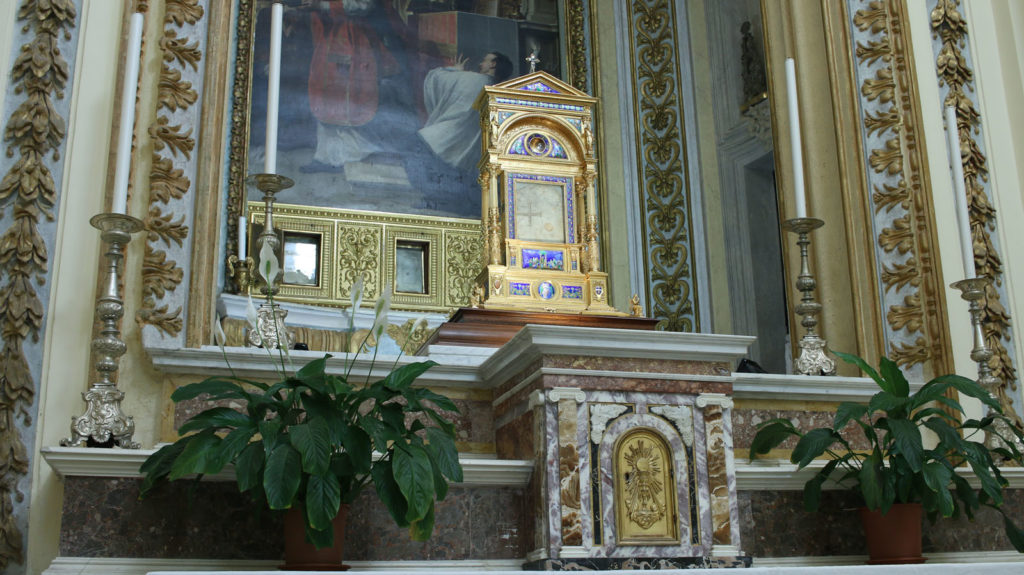
Orvieto was the birthplace for the feast of the Eucharist, called Corpus Domini, and one of the major feasts of the Catholic church. The Cathedral of Orvieto holds a treasure – a number of them, really, including frescos by Luca Signorelli, Gentile di Fabriano, and Fra Angelico. But its spiritual treasure is a relic from the Miracle of Bolsena, the miracle which was the final impetus in the church’s decision to institute the festival of Corpus Domini: “Body of the Lord”. This feast is a reminder to artists and non-artists alike that Art and Beauty can model the Incarnation in the world.
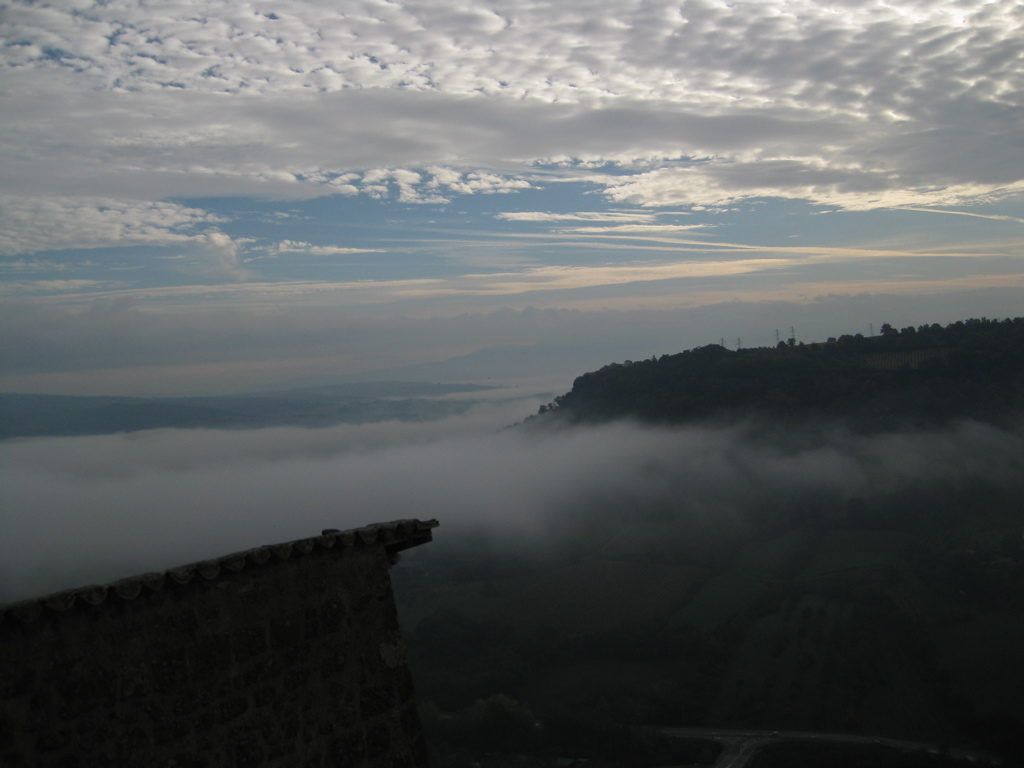
There are some experiences in life that stay with us far, far deeper and longer than measurable space and time would warrant. In my early 20s I spent three years working for the Gordon-in-Orvieto program in Orvieto, Italy. The experiences and the people continue to live so vividly within me that the distance of time and space does not seem possible.

My daughter Dalia Marie was born in January. The first part of her short life was snow-covered in what was the snowiest winter on record in Massachusetts. My first daughter Miriam…
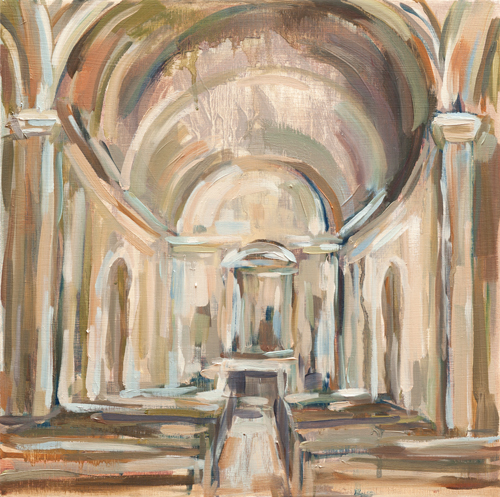
Hard to believe we are moving again less than a year after buying our first home! We didn’t mean to do that! My husband got a position with the…

This painting – one of the newer ones in my series of Figurative Paintings reflecting on the Virgin Mary – is on its way to the Kreft Arts Center at…

You’ve probably noticed that much of the subject matter of my work has Christian undertones – church architecture, references to the Virgin Mary, as well as to aspects of art…
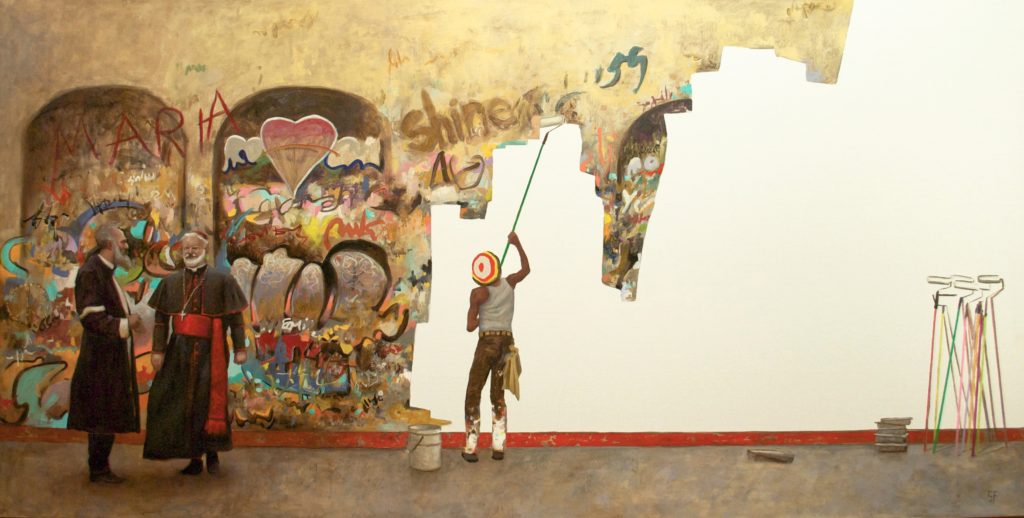
I recently was made aware of a fascinating project based out of New York which is trying to create an artwork for each verse of the Bible. Unlike other illuminated…

For the month of December my sacred architecture paintings will be on exhibit at IMAGINE: Northampton, a small, non-profit gallery and church in Northampton, MA. Northampton has a very active…
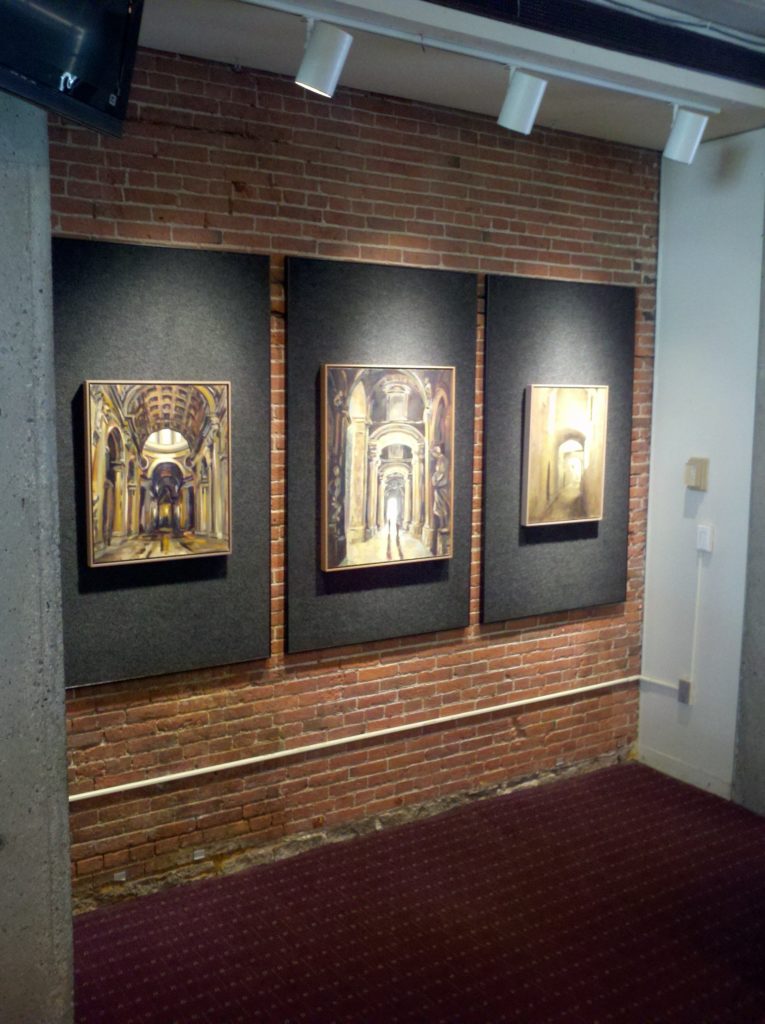
As a part of Park Street Arts, my series of architectural interiors will be on view at Park Street Church in the heart of Boston until October 19, 2013. This exhibit of paintings and prints is entitled Pilgrimage. The one-point perspective which dominates the compositions implies a destination. Our lives here on earth are the journey to that destination, a pilgrimage journey towards God.
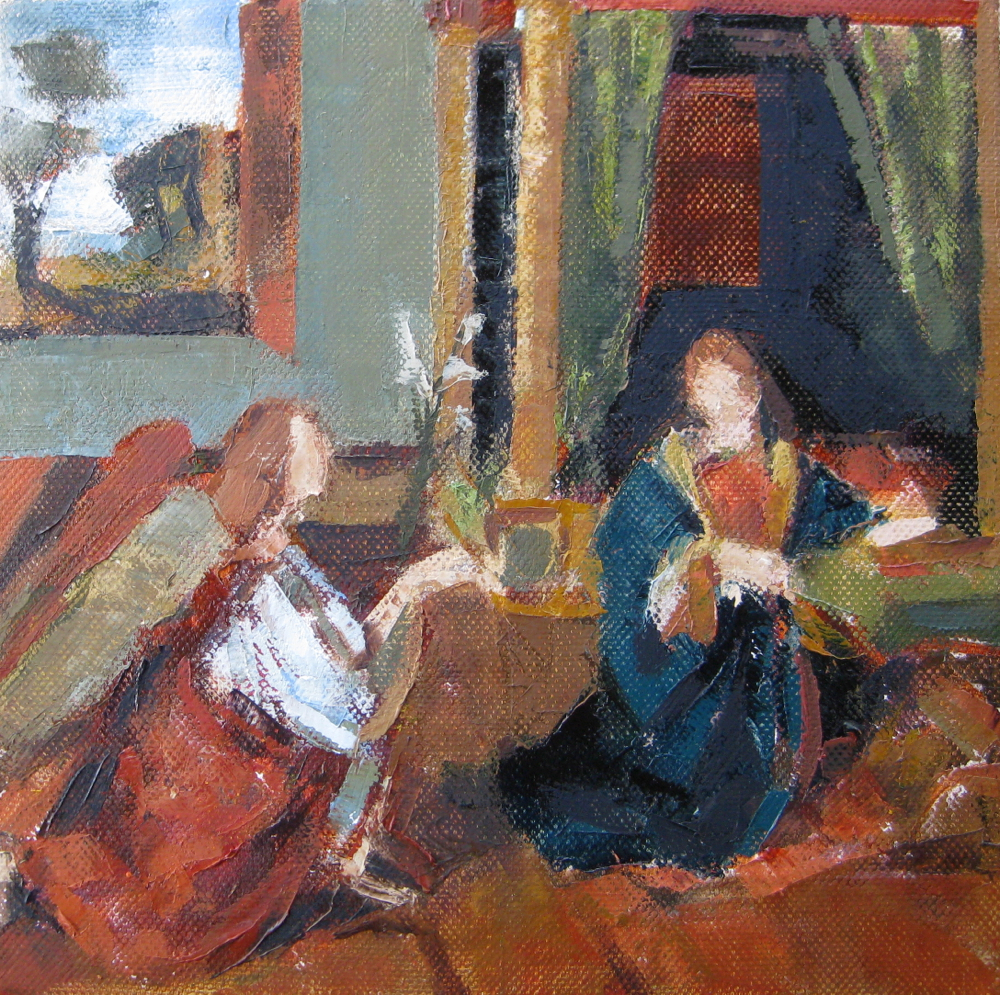
The Feast of the Annunciation was moved to April 8 this year, since March 25 fell during Holy week. The Annunciation celebrates the moment when the angel Gabriel announces to Mary that she will bear the Savior. This series of Annunciation master studies I have shared over the last months is about waiting, and the expectation of new life. At times this “new life” has been a metaphor for new beginnings, forgiveness, spiritual renewal, but in 2012 the time of waiting was literal, as I waited, in pregnancy, for my baby girl to be born…
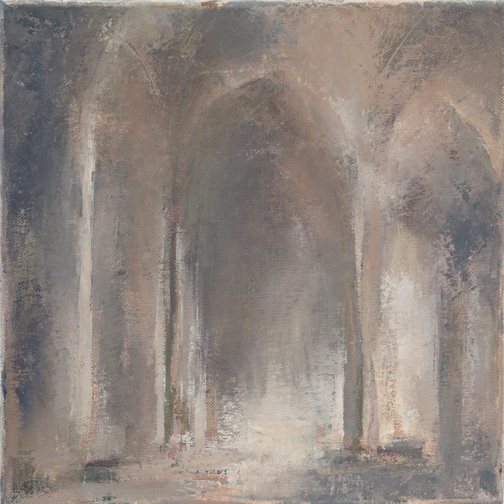
On display now at the Ashland Public Library is a series of my prints and paintings entitled Convergence. The title “Convergence” has two origins, and these two meanings themselves “converge” in the paintings. In part, “convergence” describes how, in ecclesiastical architecture in particular, celestial and terrestrial converge in built space.
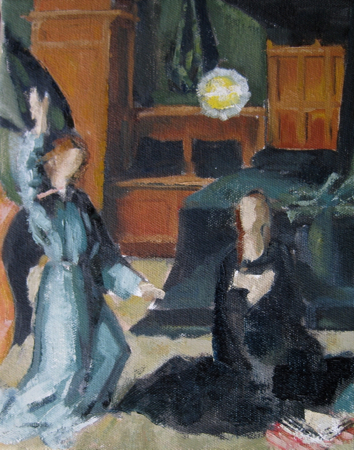
This Annunciation transcription will be included in the exhibit Compassion: The Good Samaritan, opening at Adams ArtSpace, Harvard College, Cambridge this weekend.
The Annunciation is the moment when God comes to earth – when human and divine come together to become incarnate in Jesus, Savior of the world. The Incarnation, God’s greatest act of compassion.

Appropriate to post another Annunciation transcription today, the Feast of the Archangels (Gabriel, Michael and Raphael). This particular Renaissance Annunciation infuses Classical architecture into the Biblical story of the Gabriel’s announcement to Mary. The painting also shows off the artists’ knowledge of perspective in the way that the artist places the angel in the foreground.
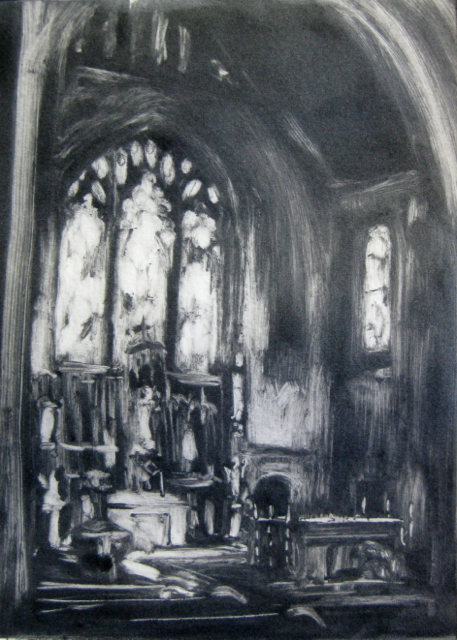
Concordia College — New York in their Journey of Faith exhibit. This exhibit paired artists with churches in Bronxville, where the college is located, in order that the artist might create a work of art specifically in response to that space. I was pleased to be selected, and was paired with St. Joseph’s Catholic Church in Bronxville.
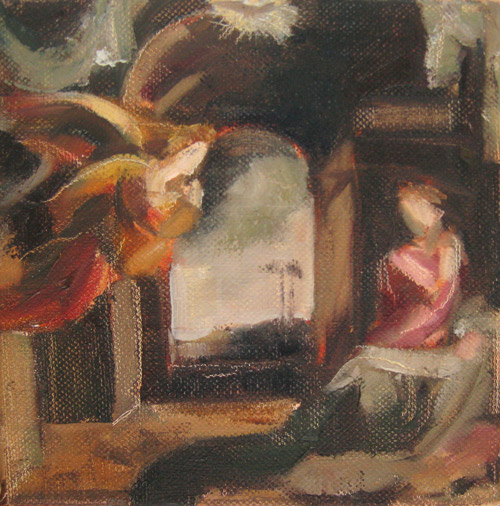
Another in my series of Annunciation transcriptions. The original Mannerist painting was completed in 1546 by Italian Domenico Beccafumi and is currently in the little town of Sarteano near Siena, Italy. I’m not always a fan of Mannerism, but I like the mirrored swooping curves in this painting and the sense of motion it creates, so different from the very still, stable Annunciations of Fra Angelico.

A few weeks back we spent the weekend on Cape Cod for a little get-away. One of our excursions was to the Church of the Transfiguration in Orleans, Massachusetts. The Community of Jesus is an ecumenical Benedictine community made up of brothers (friars), sisters (nuns), and laypeople. They began building this testament of faith in 1997, hiring architects, liturgical consultants, and artists from all over the world to complete the narrative of salvation the building tells.
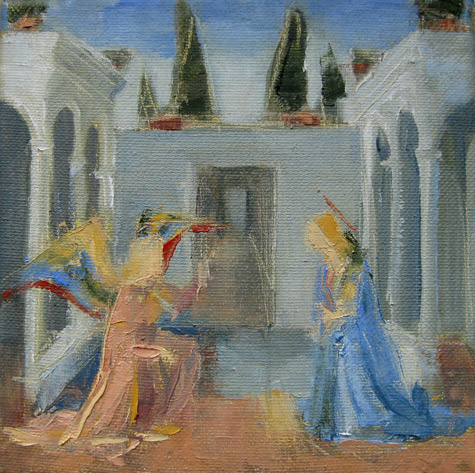
Another in my little “Annunciations from the Masters” series, from a predella by Fra Angelico, 15th century Florentine painter, who was also a Dominican brother. Graham Nickson of the New York Studio School says “the transcription endeavors to understand the nature of the original work.
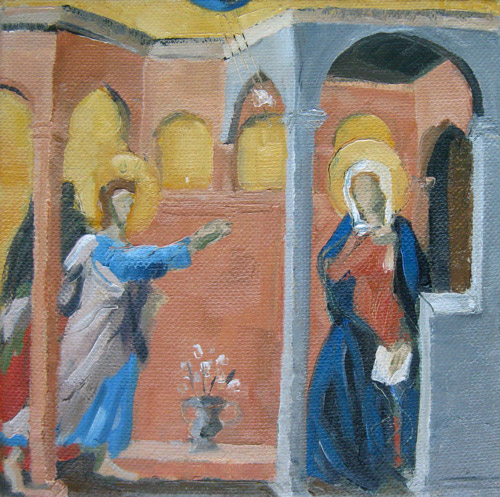
What is the purpose of “copying” a work of art? Franklin Enspruch phrases it like this in a review of Wendy Artin’s series of watercolors of the Elgin Marbles: “She is at once paying the sculptures due homage, studying them for artistic clues, and using them to reach upward in ambition and scale.”
Somehow, in entering in to someone else’s creation, one often emerges at the other end with a clearer, renewed sense of voice and direction.

I love the brilliant blue and of Mary and her contemplative gaze in the Annunciation altarpiece by Ambrogio Lorenzetti. Lorenzetti was a Sienese painter in the first half of the 14th century and this work of his is presently housed in the Pinacoteca Nazionale in Siena, Italy. My version is tiny, only 6″ x 6″, but I’m looking for the contemplative quality he captures.

These paintings are a metaphor for the struggle of my own experience to know Christ and seek to become more like his mother Mary. The metaphors in this poem, and others found throughout art history, continue to open my understanding of Christ’s relationship with his mother.
The Olympics are always an Event: even non-sports fans like me turn on their televisions to watch the grace, strength, speed and beauty of what the human body can accomplish. The passing of the torch leading up to the Olympics is also a moving part of the event; it is expressive of our human journey on this earth, of friendship across nations, and fraternity even in competition. I am excited to be included in a digital exhibit which will be released in tandem with the London Olympics.

epiphany (i pif e nee)
I can identify with the magi. They were looking for truth, seeking some sort of center, some sort of knowledge, some sort of anchor.
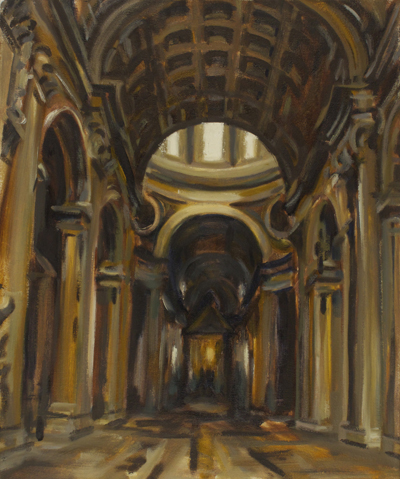
Some recent paintings and drawings of Saint Peter’s Basilica in Rome, on the occasion of the beatification of Pope John Paul II. John Paul II prayed for a “Primavera dello Spirito”: a Springtime of the Spirit. His prayer for a “Springtime of the Spirit” was answered in a multitude of ways, from the flood of youth who attended the World Youth Days (which he began).
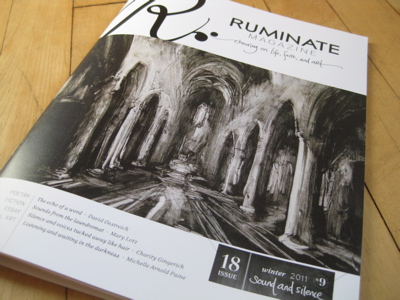
The theme of the winter issue of Ruminate magazine was “Sound and Silence”, and I was pleased that two of my prints and one of my paintings were chosen to as a visual representation of the theme. Sojourners Magazine’s Julie Polter recently said Ruminate has “staked a claim in the publishing borderlands where grit and religious devotion”.
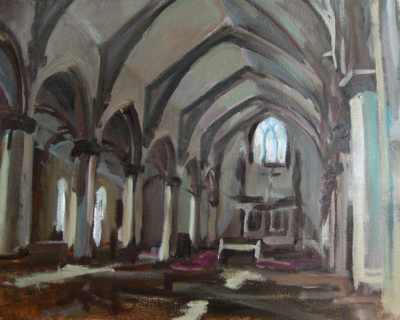
My latest church interior painting is to benefit the local parish of St. Thomas Aquinas in Jamaica Plain, several miles from where I live. What you see is the skeletal “work in progress” – still much to be done!
On Friday I made a little trip to see a cycle of paintings by Gordon Goetemann at Andover-Newton Theological School in Newton Center, MA. The cycle of large paintings is inispired by Gustav Mahler’s 2nd Symphony in C Minor — the “Resurrection” symphony. I had found out about it from a friend who had seen the show at the Cape Ann Museum in Gloucester. We were both interested in it because of the time we spent in Orvieto, where there are two great artworks representing the Resurrection of the Flesh…

Cardus has just published another of my paintings in their online journal Comment.
Our Lady of the Barren Tree is an image of hope: the strange beauty of winter, in which it requries faith to believe that trees and grass are only “sleeping” and will return with new life and growth.
The tree, the vine, the branches – these images evoke the memory of Eve in the garden of Eden whose disobedience eventually brought on the exile of humanity from paradise. Eve’s disobedience was eventually redeemed in the act of Mary’s obedient “May it be to me as you have said”.
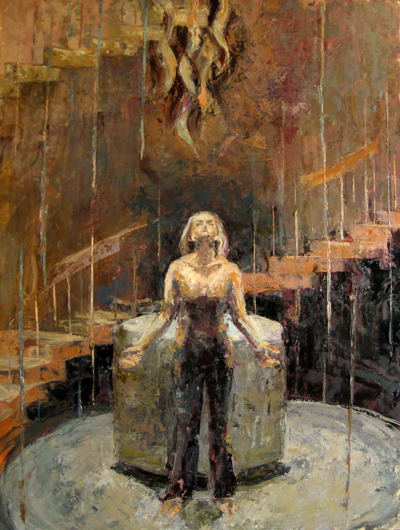
My painting of “Mary the Font” was inspired by, and is now in the collection of, Valparaiso University Chapel. During the Artist-in-Residency I had at Valparaiso University in December I…
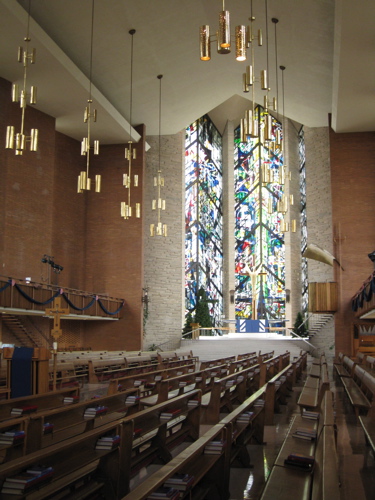
I have begun two new paintings (and have two already in process) to work on this week in the chapel at Valparaiso University. The chapel at Valpo was built in 1959 and is a masterpiece of modern architecture — it is a landmark for the area.

Friday of the second week of our stay in Orvieto we spent a day in Rome, always an amazing experience. In the morning I went to the Villa Borghese museum with a small group of students to see the special Francis Bacon-Caravaggio exhibit.

Before leaving for Italy next week I have been very intensely preparing work for an Artist-in-Residency at Valparaiso University in Valparaiso, Indiana.